

How To Get From Thailand To Cambodia
by Melissa Giroux | Last updated Feb 24, 2023 | Asia , Cambodia , Travel Tips
Wondering how to travel from Thailand to Cambodia ? In this guide, we’ll give you information to cross the border from Thailand to Cambodia by land.
I knew that crossing from Thailand to Cambodia by land could be a painful experience. I was so ready for it, though. I had many options; take a VIP bus, take a bus, or try the early train.
Ready To Travel? Don't Go Without Travel Insurance.
Check Prices
I knew a few things; the visa on arrival might require a bribe, the earlier, the better, and patience would be my best friend out there…
So, if you are planning to travel from Thailand to Cambodia by land , here’s my quick and simple guide so you can do it too.
Are you planning your trip to Thailand? Check out these Thailand itineraries.
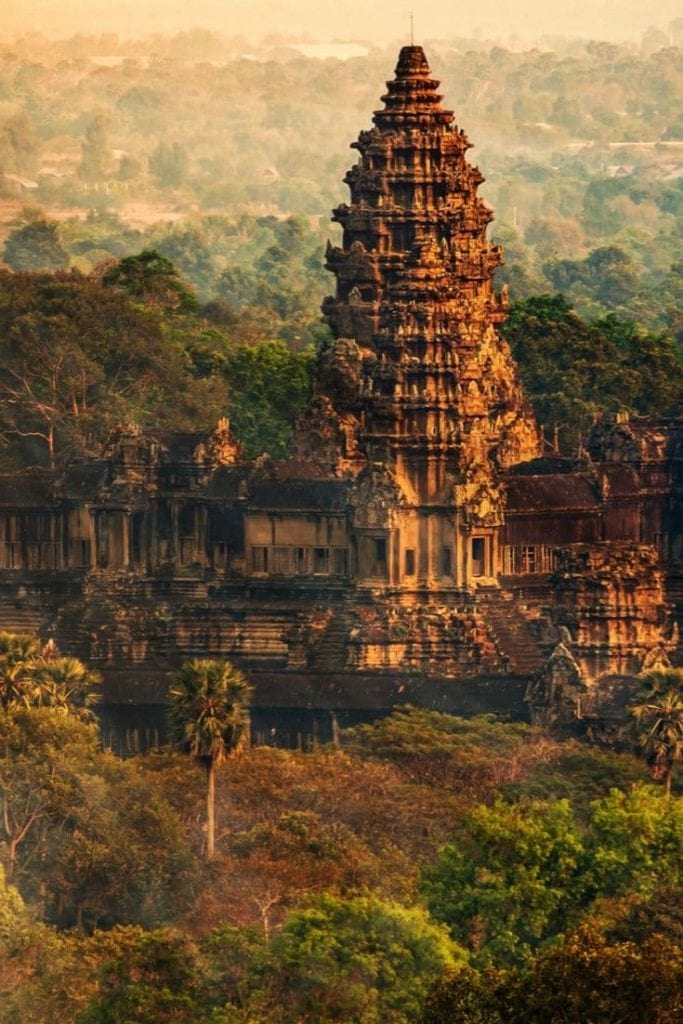
Getting From Thailand To Cambodia (By Bus)
The easiest way to travel from Thailand to Cambodia is by bus.
If you pick a service that can bring you all the way to Siem Reap, you’ll be able to skip some of the steps below.
But I still invite you to read the border crossing parts, because we give you tips to avoid being scammed with your visa on arrival.
CHECK BUS ROUTES
When I crossed the border from Thailand to Cambodia, I did it by train and by bus because it was the cheapest option at the time.
Planning your upcoming adventures? Travel by bus! (It's cheap!)
Although, it was more complicated because the train was really early and I needed to get a bus from the border crossing to Siem Reap.
That said, there’s a bus that can bring you all the way from Thailand to Siem Reap and it will be less complicated.
Getting From Thailand To Cambodia (From Bangkok By Train)
Below you’ll find the steps if you wish to take the train from Bangkok to Cambodia.
Wake Up Early
Depending on the location of your hostel, you might have to wake up sooner rather than later!
Good news; in the morning, there is no traffic jam, and you’ll be able to reach the train station quicker.
You’ll head to Hua Lamphong Railway Station to buy your train ticket.
Take The Train To Aranyaprathet
The train leaves at 5:55 AM. If you arrive early enough, you might manage to avoid the long queue.
The ticket cost only 48 baht. Alternatively, you can take the bus from Bangkok to Siem Reap .
Take The Tuktuk To The Border Thailand-Cambodia
Once you arrive at the destination, it will be around 11:35AM. You’ll find a herd of tuktuk drivers ready to try and rip you off.
So, put your smiley face and negotiation skills on. *You might have to drink a coffee at some point to be able to manage the situation.
If you travel with people, you’ll be able to get a good price. The distance isn’t long at all. We paid 20 baht each.
Then, tell them you already have your visa (even if it isn’t true), as they will bring you to the visa counter, where you’ll be ripped off.
They should bring you to the departure Thai border. They tried with us, and we didn’t leave the tuktuk saying we already had our visas.
Thai Border Crossing
Fill up your departure card (which should be in your passport) and say bye to Thailand!
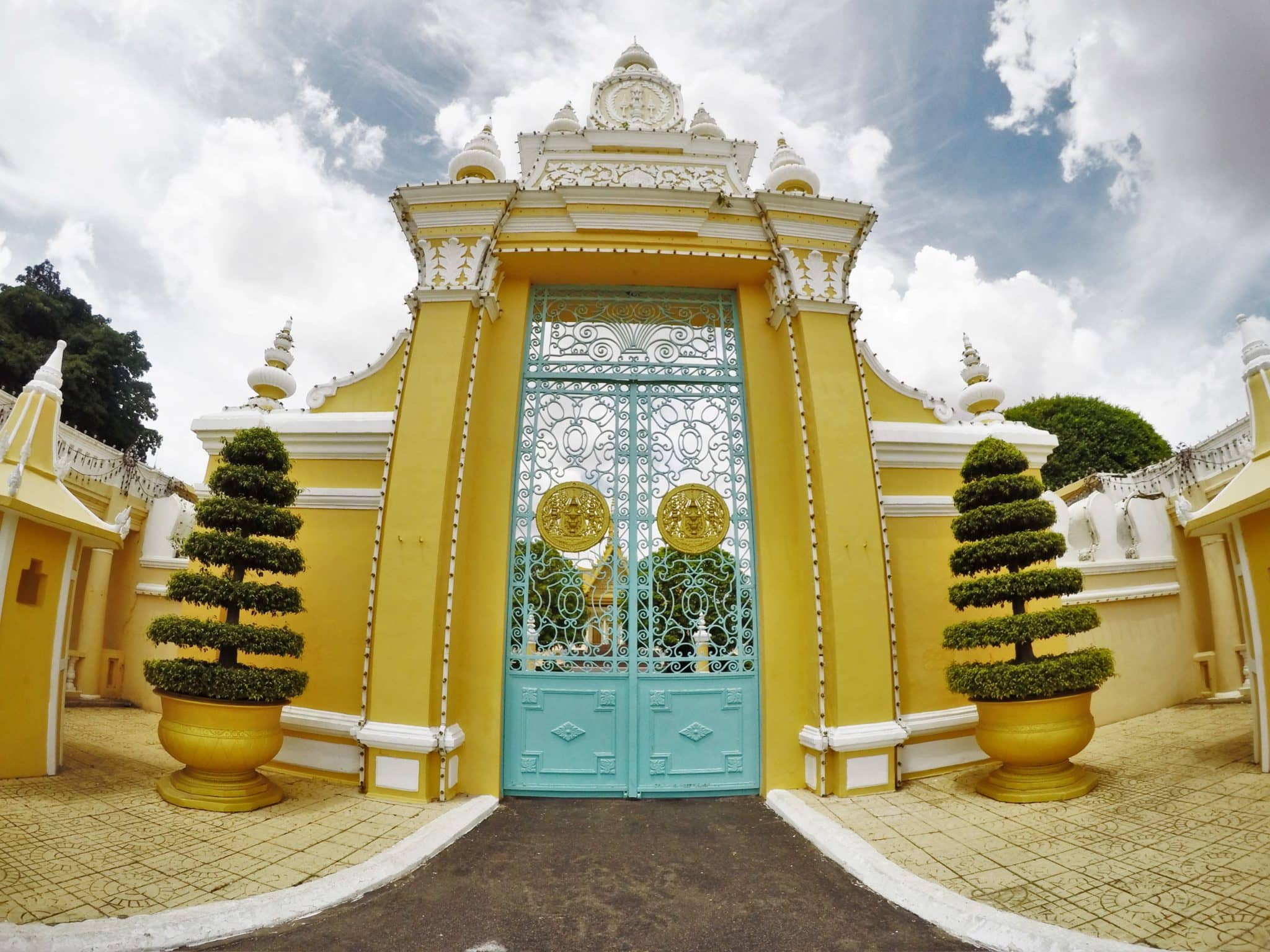
Cambodia Border Crossing
Once you walk through the border, you might find this bit confusing.
On your right, there is a little office where you can get your visa on arrival.
If you already have it, then keep going; 300 meters further, you’ll find the entry border.
Be prepared. I repeat. Be prepared.
What you’ll need to get your Cambodia visa
- Your passport;
- A picture (I didn’t have one, see below to find out more if you don’t have a picture);
- The visa cost: USD 30 (pristine money though and this is really important);
- The address where you intend to stay (your hostel will do).
What’s going to happen?
Scenario A: You’ll fill up a short form. If you have your picture, they will ask for a bribe (which should be around 100-200 baht).
Put your USD 30 in your passport with the form and then go to the counter. They will ask you for a bribe.
If you refuse to pay, they will make you wait. Then, you can try again… And try again.
If you’re patient, you might manage to avoid the bribe.If you start a scene, you might avoid the bribe too. Good luck!
Scenario B: You’ll fill up a short form, but you don’t have the picture (which should be only USD 2 more). Put your USD 32 in your passport with the form and then go to the counter.
They will ask you for USD 35. You can tell them it’s supposed to be USD 2, and you don’t have any more money.
They might make you wait a bit longer. If you are with other people, they might accept quicker.
Note: I already mentioned you really need to have pristine dollars, and I’m serious about it.
There was a girl at the border with thorn money, and they refused to take it. In the end, I don’t know if she managed to get through or not.
Get Your Stamp At The Cambodia Border
300 meters further, you’ll find the entry point where you have to fill out another short form (they basically ask for the same information as the previous form), and you’ll get your stamp there.
Take The Free Shuttle To The Bus Station
Keep going; you’ll find the sign: free shuttle to the bus station.
People will try to help you there; so don’t worry, they will take you there. They might ask you for a tip later though. Then, it’s up to you.
TOP TOURS IN CAMBODIA:
- Siem Reap Angkor Wat Angkor Wat Full-Day Small-Group Sunrise Tour – Check the price!
- Siem Reap: Full-Day Small Group Temples Tour – Check the price!
- Phnom Penh Killing Fields and S21 Tour – Check the price!
- Sihanoukville: Shore Excursions – Check the price!
- Browse local experiences in Siem Reap – Click here to browse .
Take The Bus To Siem Reap
Once you arrive at the bus station, you have different options.
To get to Siem Reap , you have three options – you can book directly on 12GO .
- Shared taxi: USD 48 for the whole taxi (this is the shorter option as you won’t have to wait to get in the taxi and it takes roughly two hours)
- Minivan: USD 10 (you’ll have to wait until they get 10 people to share the van)
Do you prefer to travel by flight?
Do you have your Cambodia visa? Get your visa today!
Final Thoughts On Thailand To Cambodia Border Crossing
As we mentioned a few times, the best way to get from Thailand to Cambodia is to book a direct bus from Bangkok to Siem Reap.
If you’re on a budget, consider taking the train to cross the land border.
We hope you have a pleasant stay in Cambodia!
Staying in Siem Reap?
Make sure to book a stay in one of the best hotels in Siem Reap. Best hostel: Onederz Siem Reap Best mid-range hotel: Viroth’s Hotel Best luxury hotel: Jaya House River Park

MY TOP RECOMMENDATIONS
BOOK HOTEL ON BOOKING.COM
BOOK HOSTEL ON HOSTELWORLD
GET YOUR TRAVEL INSURANCE
LEARN HOW TO START A TRAVEL BLOG
LEARN HOW TO VOLUNTEER ABROAD

0084 904 357 800
WhatsApp & Viber Available
[email protected]
Send us an e-mail
The Ultimate Guide to Traveling from Thailand to Cambodia
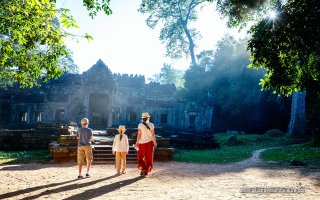
Cambodia tour from Thailand
Thailand and Cambodia is a great choice if you are looking for places to go in South East Asia. Thailand has the ideal ingredients for a holiday in paradise, and you will explore its beautiful southern islands off the east coast, relax in the gleaming sun and try some of the special Thai food. Meanwhile Cambodia is filled with ancient ruins, spectacular temples of Angkor Wat. Traveling from Bangkok to Cambodia is easy and convenient, as you have several options to choose from, such as train, bus, or flight. In this article, we will show you how to plan your cambodia tour from thailand and what to expect along the way.
Different ways to travel from Thailand to Cambodia
Thailand and Cambodia are two of the most popular tourist destinations in Southeast Asia. If you're planning a trip to either country, you may be wondering how to get from one to the other. There are a few different ways to travel between Thailand and Cambodia, and the best option for you will depend on your budget and travel preferences.
Here are some of the most popular ways to get from Thailand to Cambodia:
Thailand to Cambodia Flights
There are many ways to get from Thailand to Cambodia. One of the most popular options is to fly. There are several airlines that offer direct flights from Thailand to Cambodia, including Thai Airways, Bangkok Airways, and Cambodia Angkor Air. The flight time is typically around one hour.
If you are looking for cheap flights from Thailand to Cambodia, there are a few things you can do. First, try to book your flights in advance. Second, consider flying into a smaller airport in Cambodia. Third, look for flights that have layovers.
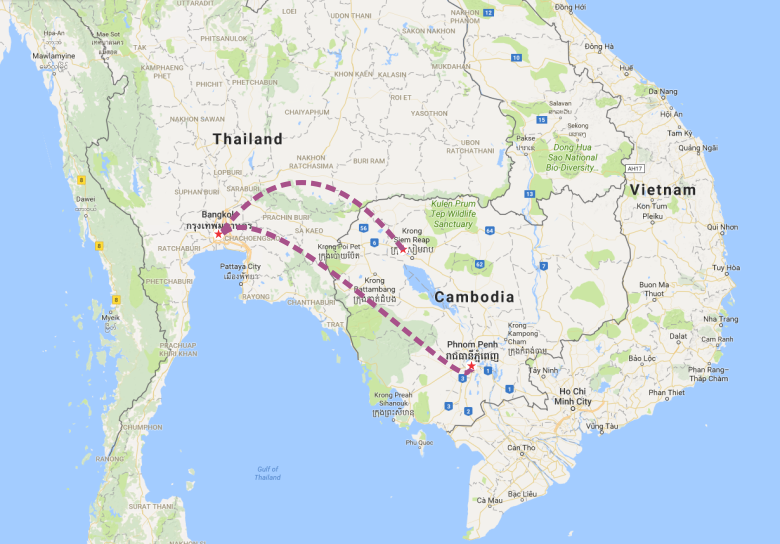
Once you have booked your flights, you will need to make arrangements for airport transfers in Cambodia. There are several options available, including taxis, tuk-tuks, and buses.
If you are not a citizen of Cambodia, you will need to get a visa before you travel. You can do this online or at the airport in Thailand.
Here are some tips for finding cheap flights from Thailand to Cambodia:
- Use a flight search engine to compare prices from different airlines.
- Book your flights in advance.
- Consider flying into a smaller airport in Cambodia.
- Look for flights that have layovers.
Thailand to Cambodia by Bus
Buses from Bangkok to Cambodia Travelling by bus from Bangkok to Cambodia is the cheapest option (from $24). It offers more flexible routes than flights for those who don’t care about time. Buses departs Bangkok ans there are 2 stops: Phnom Penh and Siem Reap.
To get from Bangkok to Siem Riep, you can take a direct bus (either Nattakan bus or Giant Ibis one) leaves from Northern bus terminal Mo Chit in the morning. Its travel time is about 7 – 10 hours. Meanwhile, there is only one direct bus of Transport Co International to Phnom Penh. It departs at 5 a.m and arrives in Phnom Penh by 6 p.m on the same day.
The bus takes about 5 hours to get from Bangkok to the border and 7 more hours to reach Phnom Penh. When you are at Aranyaprathet/ Poipet border crossing, you will take at least 1 – 2 hours to get a Cambodia visa on arrival.
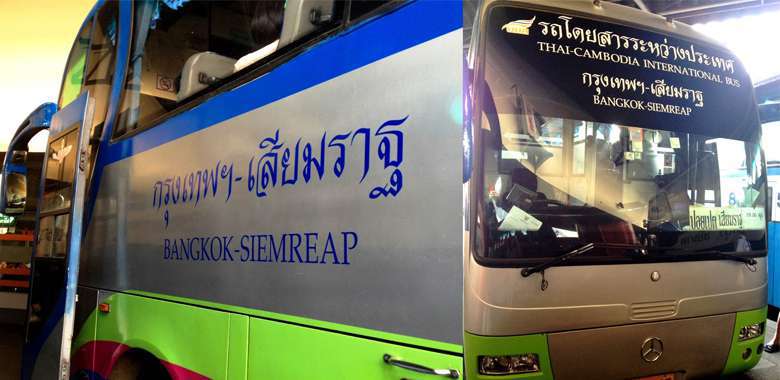
Taking a bus from Thailand to Cambodia is a popular option for budget travelers. There are several bus companies that offer direct buses from Bangkok to Siem Reap and Phnom Penh. The journey takes about 7-10 hours.
The cost of a bus ticket from Thailand to Cambodia varies depending on the company and the time of year. You can expect to pay between $10 and $20 for a one-way ticket.
There are several bus companies that offer direct buses from Thailand to Cambodia. Some of the most popular companies include:
- Virak Buntham
- Siem Reap Express
When choosing a bus company, it is important to consider the following factors:
- Price: Bus tickets can vary in price depending on the company and the time of year.
- Schedule: Not all bus companies offer direct buses from Thailand to Cambodia. Make sure to check the schedule before you book your ticket.
- Comfort: Some bus companies offer more comfortable buses than others. If you are traveling long distances, you may want to choose a bus with air conditioning and reclining seats.
Once you have chosen a bus company, you can book your ticket online or at the bus station.
Here are some tips for taking a bus from Thailand to Cambodia:
- Book your ticket in advance, especially if you are traveling during peak season.
- Make sure you have your passport and visa ready when you board the bus.
- Bring a book, magazine, or other form of entertainment to pass the time.
- Get up and move around every few hours to avoid getting stiff.
- Arrive at the bus station early to check in and find your seat.
Thailand to Cambodia Train
There is a train service that runs from Bangkok, Thailand to Phnom Penh, Cambodia. The journey takes about 16 hours and costs around $30. The train is a good option for budget travelers who want to see the countryside of Thailand and Cambodia.
The train leaves Bangkok from Hua Lamphong Station and arrives in Phnom Penh at Phnom Penh Railway Station. The train has two classes: first class and second class. First class is more comfortable and has more legroom, but it is also more expensive. Second class is less comfortable, but it is also less expensive.
The train stops at several stations along the way, including Aranyaprathet, which is the border town between Thailand and Cambodia. At Aranyaprathet, you will need to get off the train and go through immigration. Once you have cleared immigration, you can board the train to Phnom Penh.
The train journey from Bangkok to Phnom Penh is a great way to see the countryside of Thailand and Cambodia. The train passes through rice fields, forests, and mountains. You will also see several temples and villages along the way.
If you are looking for a budget-friendly way to travel from Thailand to Cambodia, the train is a good option. The train is also a good option if you want to see the countryside of Thailand and Cambodia.
To travel by train from Thailand to Cambodia, you can take the train from Bangkok to Phnom Penh via Aranyaprathet station at the Thai border gate. This is the only railway connecting the two countries. There is no railway connecting Bangkok and Siem Reap. Bangkok Aranyaprathet Train Service 05:55 11:35 275 Ordinary 13:05 17:35 279 Ordinary Once you arrive at Aranyaprathet station, you will need to go through customs procedures and then cross the border into Cambodia. Once you are on the Cambodian side, you can rent a tuk-tuk or walk to Poipet train station. From Poipet, you can catch the train to Phnom Penh. Operating Days Poipet Phnom Penh Tuesdays 06:30 21:30 As of April 2024, the railway line from Poipet to Phnom Penh is temporarily suspended from passenger operations . This means that you can only take the train from Bangkok to the border gate. You can then catch a bus, private car, or taxi to get to Phnom Penh or Siem Reap. Travel time by car from Poipet to Phnom Penh is about 9 hours, and travel time from Poipet to Siem Reap is about 3 hours. Please note: The railway line from Poipet to Phnom Penh is expected to reopen to passenger operations in near future. Cambodian Government plan to build high speed train in near future. Once this happens, you will be able to take the train all the way from Bangkok to Phnom Penh without having to change to a bus or taxi at the border.
Here are some tips for traveling by train from Thailand to Cambodia:
- Book your train tickets in advance, especially if you are traveling during peak season.
- Bring a book or a laptop to keep you entertained during the journey.
- Bring a bottle of water and some snacks to keep you hydrated and energized.
- Be prepared for long queues at the border crossing, especially during peak season.
Thailand to Cambodia Private Car
Looking for a convenient and luxurious way to travel from Thailand to Cambodia? Consider hiring a private car. A private car will pick you up from your hotel in Thailand and take you directly to your hotel in Cambodia. You will avoid the hassle of public transportation and have the freedom to relax and enjoy the scenery.
There are many companies that offer private car transfers from Thailand to Cambodia. Prices vary depending on the type of car you choose and the length of your journey. However, a private car is generally a more affordable option than flying.
Here are some tips for hiring a private car from Thailand to Cambodia:
- Book your car in advance, especially if you are traveling during peak season.
- Make sure the company you choose is reputable and has a good safety record.
- Inquire about the type of car you will be getting. Some companies offer luxury cars, while others offer more basic cars.
- Find out if the price includes any extras, such as tolls or fuel.
Once you have booked your car, you can relax and enjoy the journey to Cambodia. With a private car, you will have the freedom to explore the country at your own pace and make the most of your trip.
Here are some additional benefits of hiring a private car from Thailand to Cambodia:
- Convenience: A private car will pick you up from your hotel and take you directly to your destination. This saves you time and hassle, especially if you are traveling with luggage.
- Luxury: A private car is a more luxurious way to travel than public transportation. You will have more space and comfort, and you will be able to relax and enjoy the scenery.
- Safety: A private car is a safer way to travel than public transportation. You will have a professional driver who is familiar with the route, and you will not have to worry about getting lost or dealing with crowds.
If you are looking for a convenient, luxurious, and safe way to travel from Thailand to Cambodia, consider hiring a private car.
The best way to travel from Thailand to Cambodia
If you want to travel from Thailand to Cambodia, you have several options to choose from. You can take a bus, a train, a boat or a plane. Each option has its own advantages and disadvantages, depending on your budget, time and preferences.
However, the best way to travel from Thailand to Cambodia is by plane. Flying is the fastest and most convenient way to get from one country to another. You can save a lot of time and hassle by avoiding the long and crowded land borders, the slow and unreliable trains, and the limited and seasonal boats. You can also enjoy the comfort and safety of flying with reputable airlines.
To save money and find the best flight deals, you should book your tickets in advance and compare different airlines and routes. You should also check the visa requirements and fees for entering Cambodia, as they may vary depending on your nationality and point of entry. By choosing the right flight, you can make your travel from Thailand to Cambodia easy and enjoyable.
Tips for planning your trip from Thailand to Cambodia
If you are flying from Bangkok to Cambodia, you can get a visa on arrival at the airport easily and quickly if you qualify. When traveling by bus or train from Bangkok, getting your visa at the Aranyaprathet/ Poipet border is not complicated but can take a while. For visa on arrival, you need to bring two passport sized photos and your valid passport. If possible, obtaining an e-visa online, which costs $37 including a $7 processing fee, will save your time. The e-visa is accepted at Siem Reap and Phnom Penh airports, Poipet border (from Thailand). You might wish to find out more information about Visa to Cambodia here.
No matter how you choose to travel, be sure to research the different options and choose the one that best suits your needs.
Here are some additional tips for planning your trip from Thailand to Cambodia:
- Visas: Citizens of most countries do not need a visa to enter Cambodia for stays of up to 30 days. However, you will need to obtain a visa on arrival if you are traveling from Thailand.
- Currency: The currency in Cambodia is the riel (KHR). However, most businesses in tourist areas accept US dollars.
- Time difference: Cambodia is 1 hour ahead of Thailand.
- Weather: Cambodia has a tropical climate with wet and dry seasons. The best time to visit is during the dry season, which runs from November to April.
Here are some of the most popular border crossings between Cambodia and Thailand:
- Aranyaprathet/Poipet: This is the most popular border crossing between Cambodia and Thailand. It is located on the main road between Bangkok and Siem Reap.
- Preah Vihear/Chonburi: This border crossing is located in the north of Cambodia, near the Preah Vihear temple. It is a popular option for travelers who are visiting the temple or the surrounding area.
- Koh Kong/Kampot: This border crossing is located in the south of Cambodia, near the Koh Kong province. It is a popular option for travelers who are visiting the Koh Kong beaches or the surrounding area.
- Travel guideline to Cambodia from Australia
- Cambodia Travel - Adventure Tours
- Tips you need to know before visiting Cambodia from Australia
- Cambodia tours from Ho Chi Minh City
- Benefit of Cambodia private guided tours
QUESTIONS & ANSWERS
can you help me make an itinerary for must see in Thailand and Cambodia in 10 days
ASK A QUESTION
Name (required)
E-mail (required, but will not display)
Notify me of follow-up comments
REQUEST A FREE QUOTE
Travel to cambodia.
- Must-see destinations in Cambodia
- Best time to visit Cambodia
- Top things to do in Cambodia with children
- Cambodia entry requirements 2024
- Best things to do in Cambodia 2024
- Travelling to Cambodia
- Vietnam Cambodia Tours
Cambodia Travel Guides
- Destinations
- Travel News
- Travel Tips
Why Choose Cambodia Tours?
Top cambodia tour packages, siem reap discovery - 6 days.
Siem Reap, a resort town in northwestern Cambodia, is the gateway to the ruins of Angkor, the seat of the Khmer kingdom from the 9th–15th centuries. Siem Reap Discovery tour is other alternative that less touristy to access the rich...
Price: Contact Us
Essential Cambodia Tour Package - 5 Days
The trail from Siem Reap to Phnom Penh blend the local life vision with the nature spectacular in a very own way. The elegant touch to the heritage of Angkor and vibrant city of Phnom Penh features a beautiful experience...
Explore Cambodia - 13 Days
For 13 days explore Cambodia’s rich culture and history on a tour that takes you deep into the heart of the Khmer Kingdom. Discover the ancient Angkor temples and enjoy a rustic homestay; see the endangered freshwater dolphins that inhabit...
14 Days Highlights of Cambodia Tour Pack…
No matter where you travel in Cambodia, the past is always present. History, both ancient and modern, is everywhere here; whether you’re cycling in the shadows of the mighty Angkor Wat, wandering the streets of cosmopolitan Phnom Penh, or exploring...
Cambodia Discovery - 18 Days
Admire Cambodia’s sublime beauty in style on this 18-day trip that takes you deep into the country’s rich culture and history. Immerse yourself in the heart of the Khmer way of life, enjoying rustic homestays, visiting remote tribal villages and...
Cambodia Trips
- Luxury Mekong Cruises
- Cambodia Cooking Class
- Cambodia & Vietnam Tour
- Cambodia Vacation
Indochina Tours
- Testimonials
- Travel Guides
- Privacy Policy
- Term & Conditions
- Skip to main content
- Skip to primary sidebar

Destinations
- Plan Your Trip
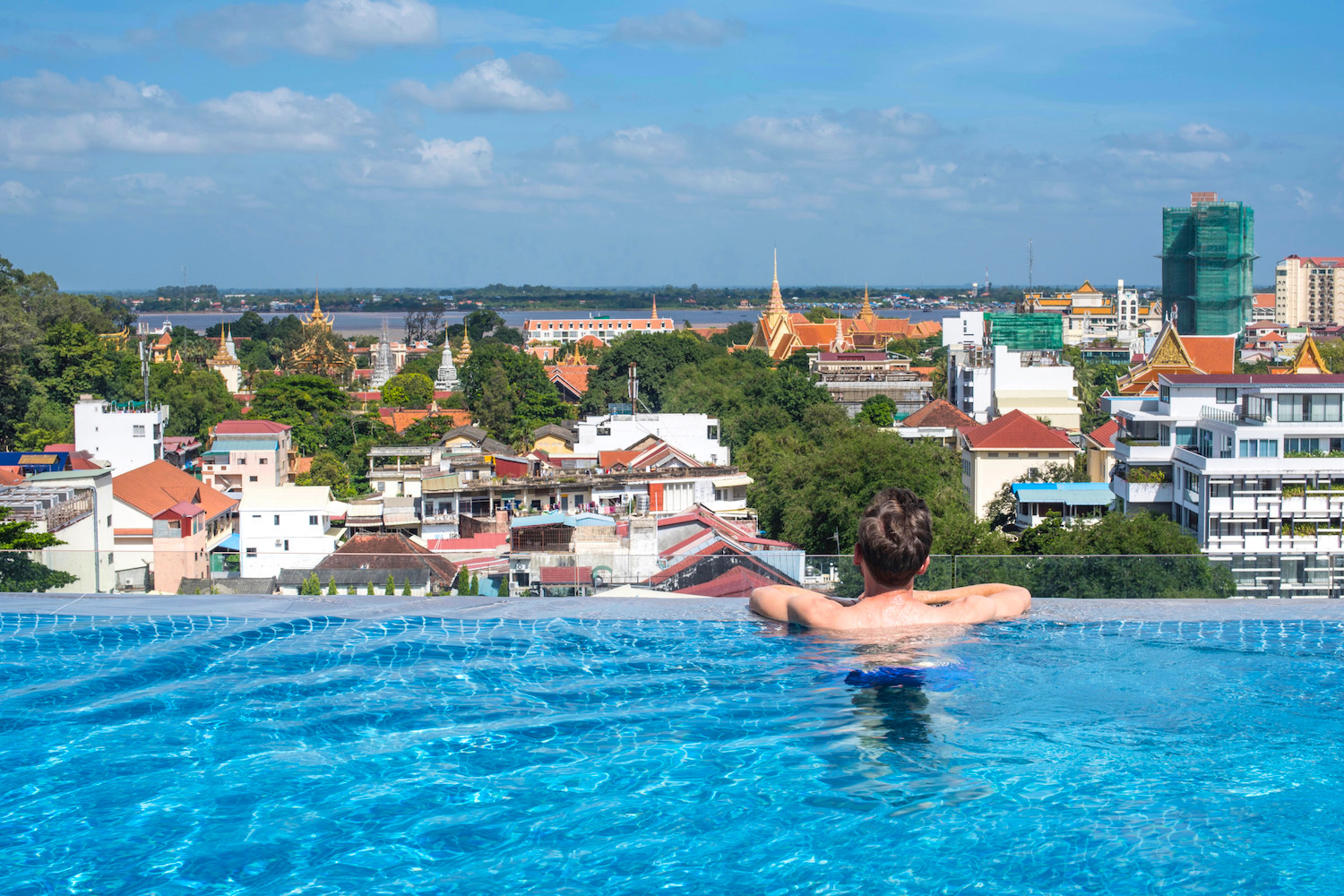
Continue to Cambodia
January 11, 2023 by Robert Schrader Leave a Comment
Cambodia, with both a population and a land area only a fraction of Thailand’s, can seem like a downgrade after exploring the Land of Smiles. Apart from Angkor Wat, is there really anything worth seeing in Cambodia?
The short answer—of course there is. For the long answer, you’ll have to continue reading: Cambodia is definitely worth visiting, but it’s not an apples-to-apples comparison with Thailand.
Indeed, this post mostly assumes you’ve already decided to travel from Thailand to Cambodia . My goal, at least past the next couple of paragraphs, it to help you get from Point A to Point B, not to convince you that you need to make the journey in the first place.
Is Cambodia Worth Visiting?
Cambodia is a much smaller country than Thailand, frankly, and has a much more narrow range of destinations and experiences. There are only a couple of worthwhile places to hit the beach; apart from Phnom Penh and Siem Reap , very few Cambodia cities merit even a day of your time. With all this being said, I wouldn’t go so far as to say that Cambodia itself isn’t worth visiting.
What Cambodia lacks in obvious allure, it makes up in other ways. For example, while Cambodia isn’t as exciting as Thailand, it’s also way cheaper. You’ll also need to spend far less time in Cambodia than you would in Thailand, due to its smaller size and fewer attractions. In my opinion, 5-7 days in Cambodia makes for perfect chaser to 2 or 3 weeks in Thailand.
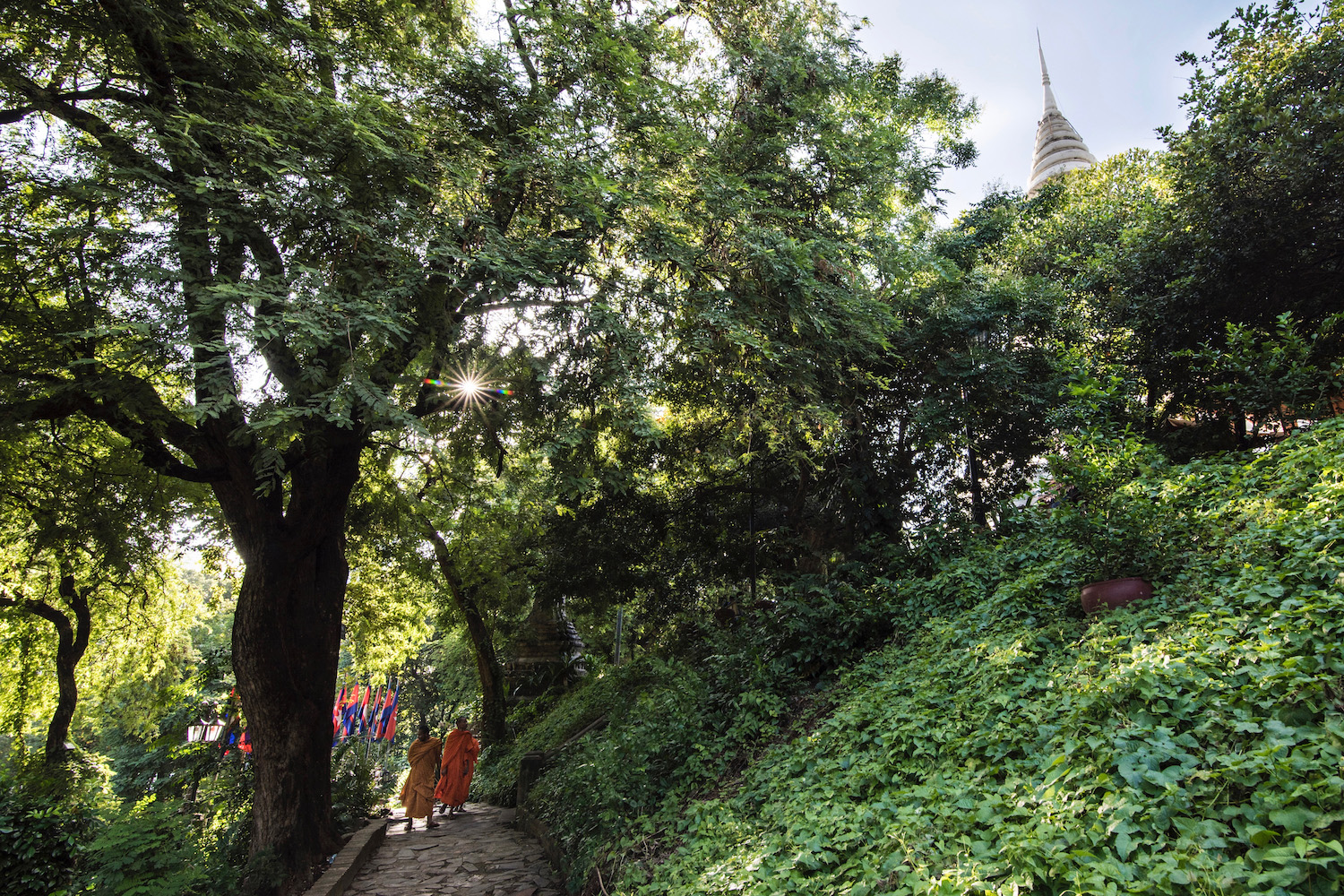
How to Get from Thailand to Cambodia
Fly from bangkok.
The easiest way to travel to Cambodia is to take a nonstop flight from one of Bangkok’s two airports . You can fly nonstop from Bangkok to Phnom Penh and Siem Reap on several airlines, including Thai Smile, Bangkok Airway and Thai AirAsia.
Go from Bangkok to Siem Reap by train and bus
Another way to travel from Thailand to Cambodia is overland. This is slower—just the train from Bangkok to the border town of Aranyaprathet takes half a day—but is also more scenic and of course, cheaper. After you arrive at the border, cross on foot to the Cambodian town of Poipet, where you can connect to a bus or share taxi.
Take a bus from Khao San Road
Technically speaking, there are some “direct” buses from Bangkok’s Khao San Road to Siem Reap. Unfortunately, many of these services are notorious for various scams, including stranding travelers at the Poipet border or forcing them to pay bribes to get back on the bus. Tread carefully.
Cross the border in Isaan
Traveling in Thailand’s Isaan region ? Here, if you have your own car or hire a car and drive, you can go from Thailand to Cambodia overland at various border crossings. Note that in many cases, this ends up just being for a day, such as to visit Preah Vihear Temple from Ubon Ratchathani or Surin.
Take a bus from Trat
In recent years, several companies have inaugurated direct bus service from Trat city to Sihanoukville, the city that’s the jumping off point for journeys to the country’s Koh Rong island. These don’t tend to be as scammy as the Khao San Road buses, but they are also far from reliable.
How Many Days Do You Need in Cambodia?
As I mentioned earlier, Cambodia isn’t really a big country. Adding to this, most travelers only come to see Siem Reap and Angkor Wat (maybe with a few days in Phnom Penh as well); the average visitor to Cambodia spends a week or less here. This is not to say you can’t stay longer, of course—there’s enough to see in Cambodia to occupy at least a week or two of your time, if you’re curious and adventurous.
The other factor to consider, when traveling to Cambodia from Thailand, is whether you’ll be tired and traveled out. If you only spend a week or two in Thailand, then taking a semi-long trip to Cambodia might not seem so overwhelming. If you’ve been in Thailand for a while, however, you might not feel so intrepid; a few nights in Siem Reap may end up being all doctor ordered.
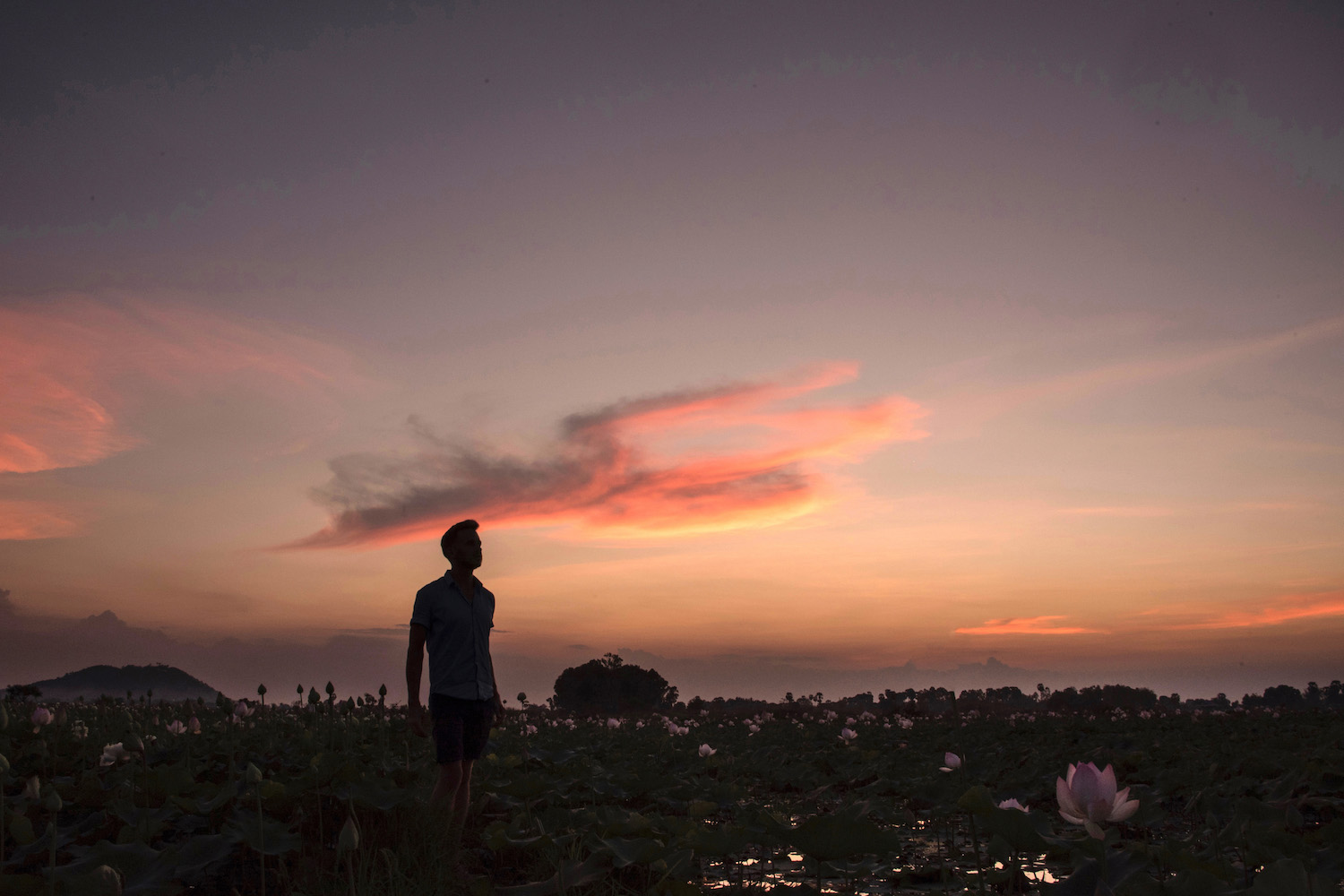
Other FAQ About Visiting Cambodia After Thailand
Can you travel from thailand to cambodia.
It’s easy to travel from Thailand to Cambodia, whether by plane, bus or a combination of bus and train. Do keep in mind, before you travel, that requirements for entering Cambodia may be different than those you needed to enter Thailand.
Can you take a train from Thailand to Cambodia?
Trains do not travel from Thailand all the way to Cambodia. Rather, you can ride a train from Bangkok to Aranyaprathet and then, after crossing the Cambodian border on foot, continue by bus or taxi from Poipet (the Cambodian border town) to Siem Reap.
Do Americans need a visa for Cambodia?
Americans need a visa for Cambodia, although in most cases they can apply for this online as an eVisa. Visit the official Cambodia eVisa website to see if you are able to obtain your visa via the internet. If you can’t, you will need to contact your nearest Cambodian embassy or consulate.
The Bottom Line
There are countless ways to travel from Thailand to Cambodia , although most travelers simply board a flight from Bangkok. Those that don’t are usually either backpackers who can’t afford the expense, or journey-minded travelers who want to reach their destination in the most interesting way possible. No matter how you travel onward to Cambodia, I hope it serves as a perfect companion to the time you spent in Thailand. Indeed, when you hire me to plan your trip to Southeast Asia , I’ll make sure every part of your trip is in perfect proportion (among the other advantages of traveling with one of my custom itineraries).
Plan Your Thailand Trip

Subscribe to email updates!
Words, images and design ©2019-2024 Robert Schrader, All rights reserved. Read Privacy Policy or view sitemap .

How to Travel by Land from Thailand to Cambodia (A Backpacker’s Guide)
In this article, you will know how to travel by land from Thailand to Cambodia . Thailand and Cambodia are two South East Asian countries you should not miss. If you have at least a week of vacation, you can cross borders and spend a day or three here. Flights are available to or from both countries, but traveling by land is a unique experience.
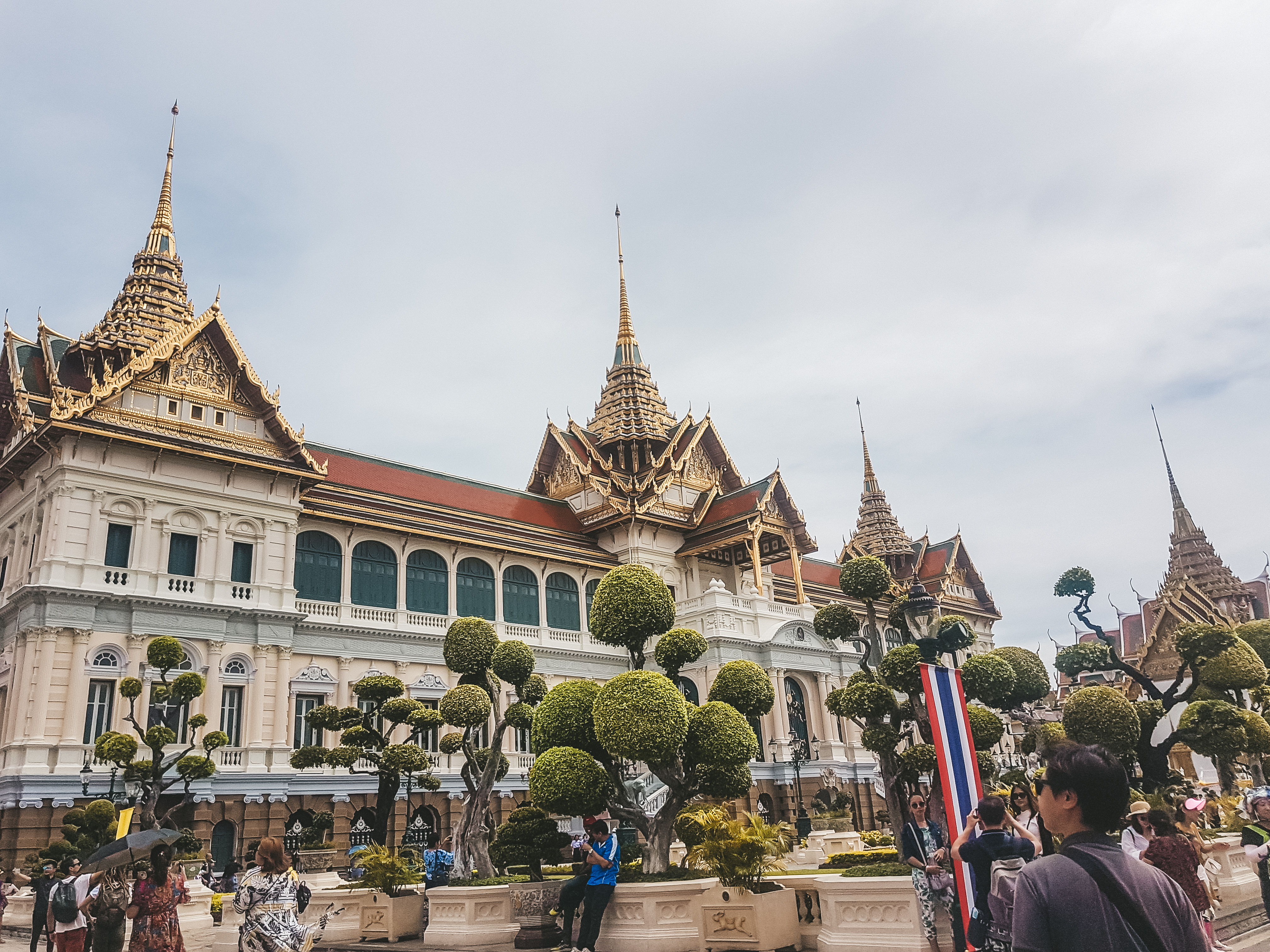
The guide will mainly focus on Bangkok to Siem Reap. For those coming from Chiang Mai or Phuket, you would most likely stop at Bangkok. Siem Reap is also near the border than Phnom Pehn, Cambodia’s capital. It’s a spot you shouldn’t miss as the Angkor Wat is there. From Siem Reap, though, you can ride a bus to the capital.
- Trip to Thailand with my Grandmother and Our Luxurious Staycation at Ramada Plaza by Wyndham Bangkok Menam Riverside
- The 8 Best Liveaboard Dive Trips in Thailand [From Budget to Luxury Boat]
- Is Thailand Visa Free For Filipinos? Requirements and Guide to Tourist Visa Extension in Thailand
- Best Backpacker Hostels in Bangkok, Thailand
- How to Teach English in Thailand – The Land of Smiles!

Bangkok, Thailand to Siem Reap by Direct Bus
Many bus companies are catering to travel from Bangkok to Siem Reap. Check out your options:
- Giant Ibis offers luxury buses from Bangkok to Siem Reap
- There are two schedules: 7:45 AM and 8:45 AM
- For the first bust, you’ll need to go to Giant Ibis Stop at Phra Sumen Road that’s near Khao San Road
- For the second bus, you’ll have to go to 12Go Makkasan Station – Airport Link
- Travel time is 8 – 9 hours depending on traffic
- You could ask the crew to help you with your visa on the border; there’s an additional USD 5 service fee; fro Filipinos, it’s visa-free
- It costs THB 1,021; you can also book online for USD 32
Travel Mark Bangkok
- Bus pick-up from Khao San (in front of McDonald’s) in Bangkok
- It costs USD 30 for the 12:45 AM bus while USD 23 for the 8:30 AM bus
- You can book online for your ticket
Nattakan Bus
- Buses are located at Mo Chit Bus Terminal (#21 – 23)
- Bus times are at 8:00 AM and 9:00 AM
- Tickets USD 22 – 28, depending on where you book
Bangkok to Siem Reap (Cutting Trips)
By Train from Bangkok to Aranyaprathet
- Go to Hua Lamphong Railway Station in Bangkok
- You can buy tickets at the station for THB 48
- The schedule is 5:55 AM that arrives at 11:35 AM at the border, while the second one is at 1:05 PM that arrives at 5:35 PM in Aranyaprathet
By Bus from Bangkok to Aranyaprathet (Border town)
- Go to Mo Chit Bus Terminal in Bangkok
- Ride a bus there to Aranyaprathet
- Tickets are from THB 190 – 350, depending on the class
- Schedules are as from 3:30 AM to 5:30 PM, almost one bus every 1 to 3 hours
- Travel time is about 5 hours
Crossing the Border
- Go to the border at Rong Klue Market; you can take a taxi or a tuk-tuk
- Pass through the Thailand Immigration Office
- Cross the border and proceed to the Cambodia Immigration Office
- Beware of Scammers!
From Poipet to Siem Reap (border town)
- Ride a Shuttle Bus to the Government terminal for free
- Take a bus from Poipet to Siem Reap
- Tickets are as low as USD 8
- You can also ride a taxi for USD 12 per person (good for four)
- Travel time is about 3 to 4 hours
Travel Tips for your Land travel from Thailand to Cambodia
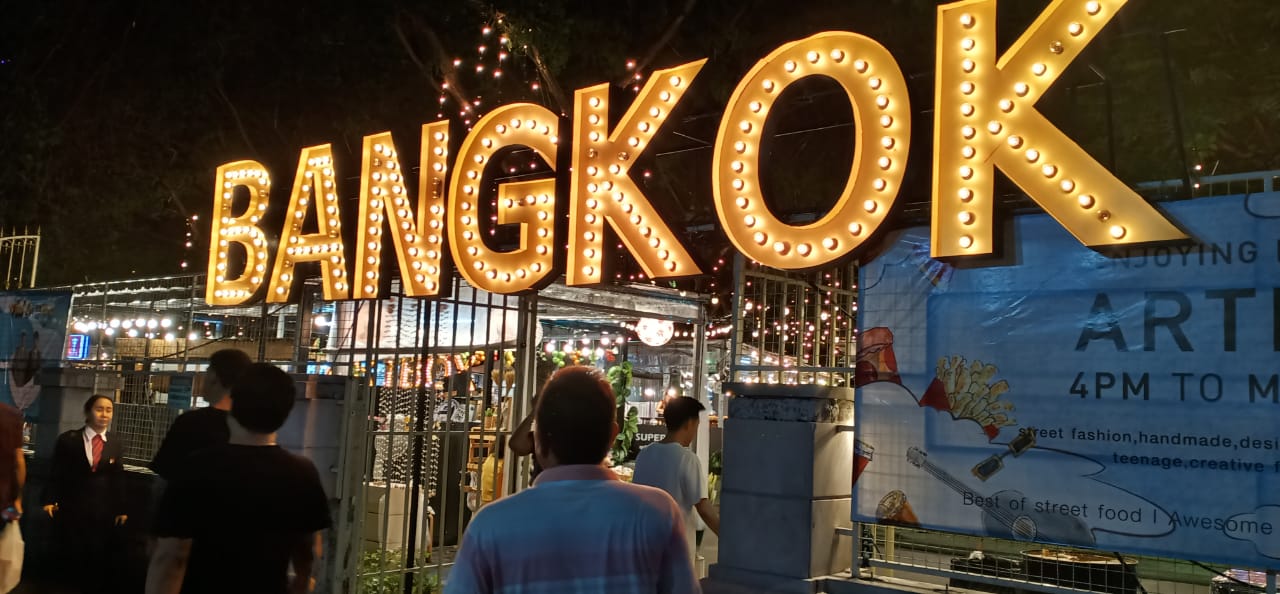
- Some trains may have free snacks or a store inside, but to be sure, you can buy snacks before you travel in case you get hungry
- Immigration officers most likely would ask for a USD 2 bribe for faster transactions
- Be careful of travel agencies in Khao San that will sell you direct tickets for a low price, most stops at a place where they will tell ask you to pay USD 15 more for your visa
- There are many scammers along the border selling you fake visas as well; you can avoid this by smiling or ignoring them
- I recommend the Giant Ibis direct bus, especially for female travelers; they have Wi-Fi available, too
Transportation Tip: If you’re looking for the cheapest way to book the Trains, Buses, Ferries , Transfers on this route, we use 12Go.Asia to compare the prices!
I hope you have learned how to travel by land from Thailand to Cambodia , particularly Bangkok, to Siem Reap in this article. If you want to go beyond Siem Reap, you can ride a bus there to Phnom Pehn or ride directly from Poipet. Traveling by land is a cheap way to go to Cambodia from Thailand compared to flights. It’s also the best backpacking experience you’ll get. Happy and Safe Travels!

Are you on Pinterest? Pin these!
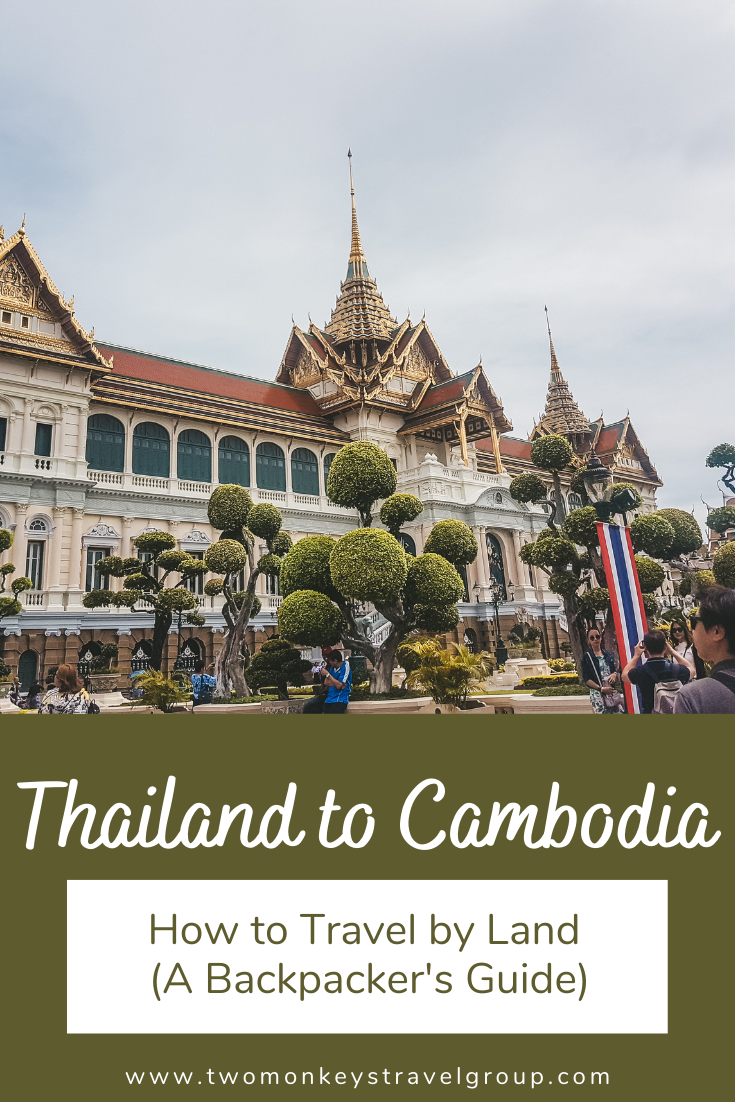
About the Writer

Hey, I’m Lyza! I once was a person who just imagined going to places “one day” but decided to pursue my dreams. My first travel abroad was in Japan, solo, last 2018, and fell in love with the experience. I aim to visit 10 countries before turning 30 and 2 new places in the Philippines every year. Besides traveling, I love organizing trips, taking pictures, reading, and making new friends. Follow my adventures through my Instagram .
Leave a Reply Cancel reply
Your email address will not be published. Required fields are marked *
This site uses Akismet to reduce spam. Learn how your comment data is processed .
COPYRIGHT DISCLAIMER: Many of the articles on Two Monkeys Travel Group are guest posts by a number of Approved Contributors and are hosted by Two Monkeys Travel Group. Approved Contributors control their own work and post freely to our site. This includes all text and images that they use within their own work. All contributors are instructed to follow internationally recognised copyright and intellectual property guidelines. Two Monkeys Travel Group takes its own responsibilities very seriously, so if you feel that any part of this work is abusive in any way, please send us an email so that we can investigate - [email protected]
DISCLOSURE: Please note that some of the links above are affiliate links. So when you make a purchase we sometimes make a small commission, at no extra cost to you. The cost to you remains the same, sometimes even cheaper if we have negotiated a special deal for our readers.We use all of the companies we have listed here and that’s why they are in this list, but of course we need to keep Two Monkeys Travel Group running as well as it can, which is exactly what you’re helping with if you do decide to buy or book something through an affiliate link! If you have any more questions about the companies we use or any other companies you’re looking at, just email us and we’ll be happy to help. Please see our full disclaimer page for more information.
Written by Two Monkeys Travel - Contributor
Two Monkeys Travel Group – Community Travel Blog is a travel blog and website. We quickly grew into a valuable source of inspiring travel stories, advice, itineraries and travel guides, with the aim of demonstrating how to live a sustainable life of travel, whilst living your own definition of success. If you'd like to contribute and write a guest post, contact us at [email protected]
48 Hours in Tokyo – Exploring Japan’s Vibrant Capital
How to find the best hotels in new york, top california destinations for families to enjoy, scuba diving and snorkeling in the philippines, what are the benefits of booking flight tickets in advance, related posts, japan travel guide: 25 day trips that you can do in japan, diy travel guide to ilocos norte, philippines [with suggested tours], how to get kuwait tourist visa and tips on the expat life in kuwait, best hostels in manila, philippines (the whole metro manila), previous post, 7 things to do in prague, czech republic, 10 best things to do in mallorca, spain [with suggested tours], subscribe to our newsletter.
Receive tips on how you can live a sustainable long-term travel lifestyle!
- First Name *
- Comments This field is for validation purposes and should be left unchanged.
What you need to know before visiting Cambodia: health care, currency, and culture
Mar 26, 2022 • 7 min read
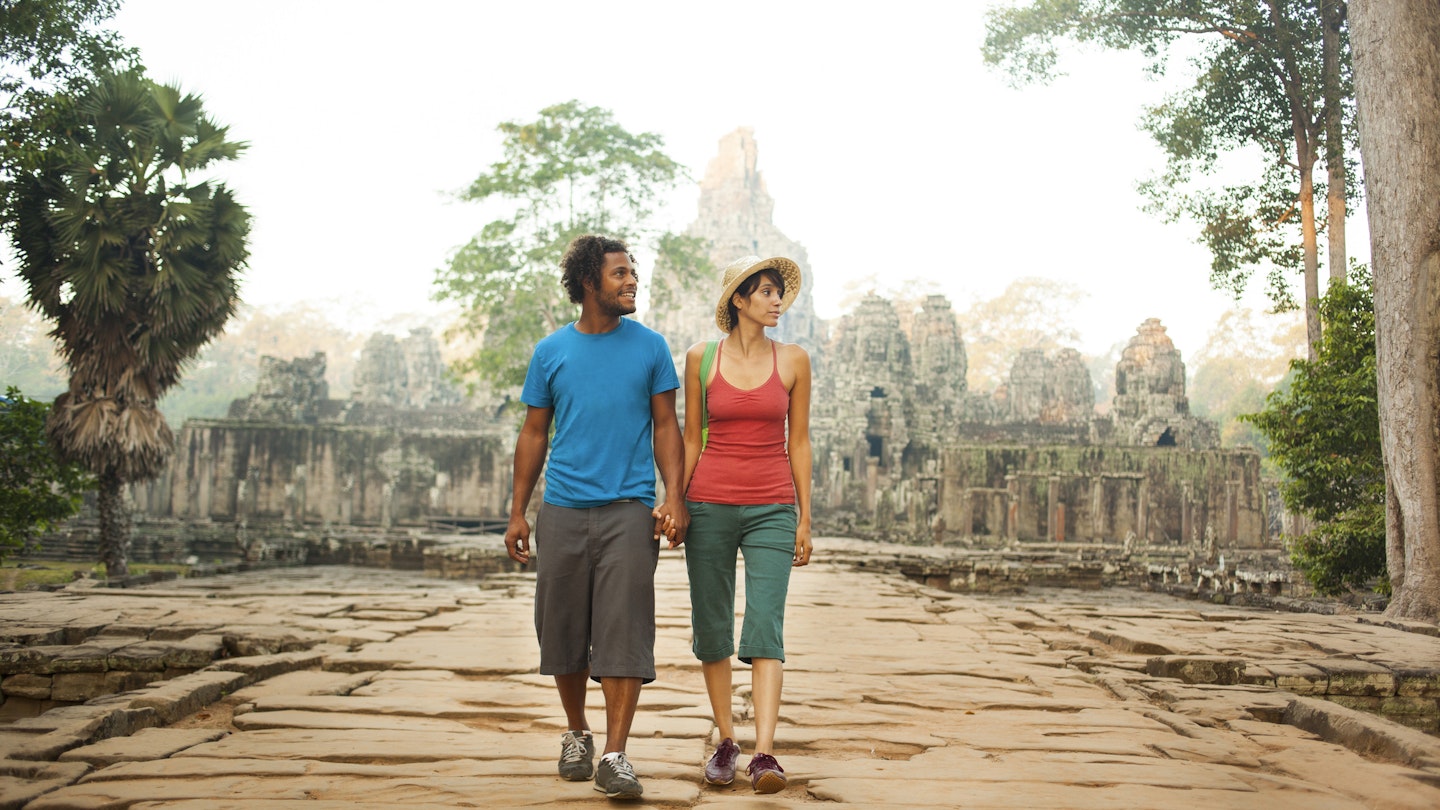
From what to pack to being prepared for health and safety concerns, here's what you need to know ahead of a trip to Cambodia © Jim Purdum / Getty Images
Cambodia is considered one of the friendliest countries in Southeast Asia . Thanks to an unbreakable spirit and infectious optimism, the Khmers have prevailed. No visitor comes away without a measure of admiration and affection for the inhabitants of this enigmatic kingdom.
General health is more of an issue here than in many other parts of Southeast Asia, due to a lack of international-standard medical-treatment facilities, a prevalence of tropical diseases, and poor sanitation. Once you venture into rural areas you are on your own, although most provinces have a reasonable clinic for minor health problems.
Cambodia is generally a very safe country to visit, but occasional crimes and scams do happen so it is best to minimize the risks where possible. Whether you're a first-time visitor or returning once again, this guide can help you plan the essentials for your trip.
Cambodia's use of currency can be confusing
Cambodia’s official currency is the riel (4000r = US$1). The US dollar is used as a parallel currency and accepted everywhere, although small change may arrive in riel. Just to confuse matters, in towns bordering Thailand Thai baht (B) is also accepted.
Get yourself a krama as soon as you arrive
Purchase a krama , a traditional Cambodian checked scarf, as soon as you arrive – it's a multipurpose travel towel that the locals use in a multitude of ways. The primary use is protection from the sun, dust, and wind, but you can also use it as a quick cover-up sarong-style, to towel yourself down after a dip in the pool, and as a makeshift pillow. Essentially the list is as long as your imagination and it takes up virtually no space in your backpack compared to the multiple equivalent products it dupes.

Pack lightweight gear and casual clothes for Cambodia
Lightweight and loose-fitting clothes are the best plan in Cambodia, including cottons and linens to combat the humidity. Cambodia is not a particularly dressy place unless you're spending time at high-end bars and clubs in Phnom Penh or Siem Reap , so smart clothes are rarely a necessity. If heading to the upland northeast in November to March, pack a warm top for the cool nights.
What to pack
- Lightweight, light-colored clothing to reflect the sun
- Comfortable sandals or shoes
- Refillable water bottle
- Powerful sunscreen and long-lasting deodorant
- Earplugs to block out the noise
- Unlocked mobile phone for use with a Cambodian SIM card (roaming charges are very expensive, it’s worth buying a cheap SIM upon arrival)
- A light raincoat if traveling in the wet season.
There is some important etiquette to keep in mind
Cambodian people are very gracious hosts, but there are some important spiritual and social conventions to observe.
Always be respectful at a Buddhist site
When visiting temples, cover up to the knees and elbows, and remove shoes and any head covering when entering temple buildings. Sit with your feet tucked behind you to avoid pointing them at Buddha images. It's also good to leave a small donation. Women should never touch a monk or his offering bowl – the Buddhist faith believes it is contrary to a monk's sacred vows to be in close proximity to a woman that isn't a relative.
Use the local greeting when meeting new people
Called the sompiah , the local greeting in Cambodia involves putting your hands together in a prayer-like manner. Use this when introduced to new Khmer friends. When beckoning someone over, always wave towards yourself with the palm down.
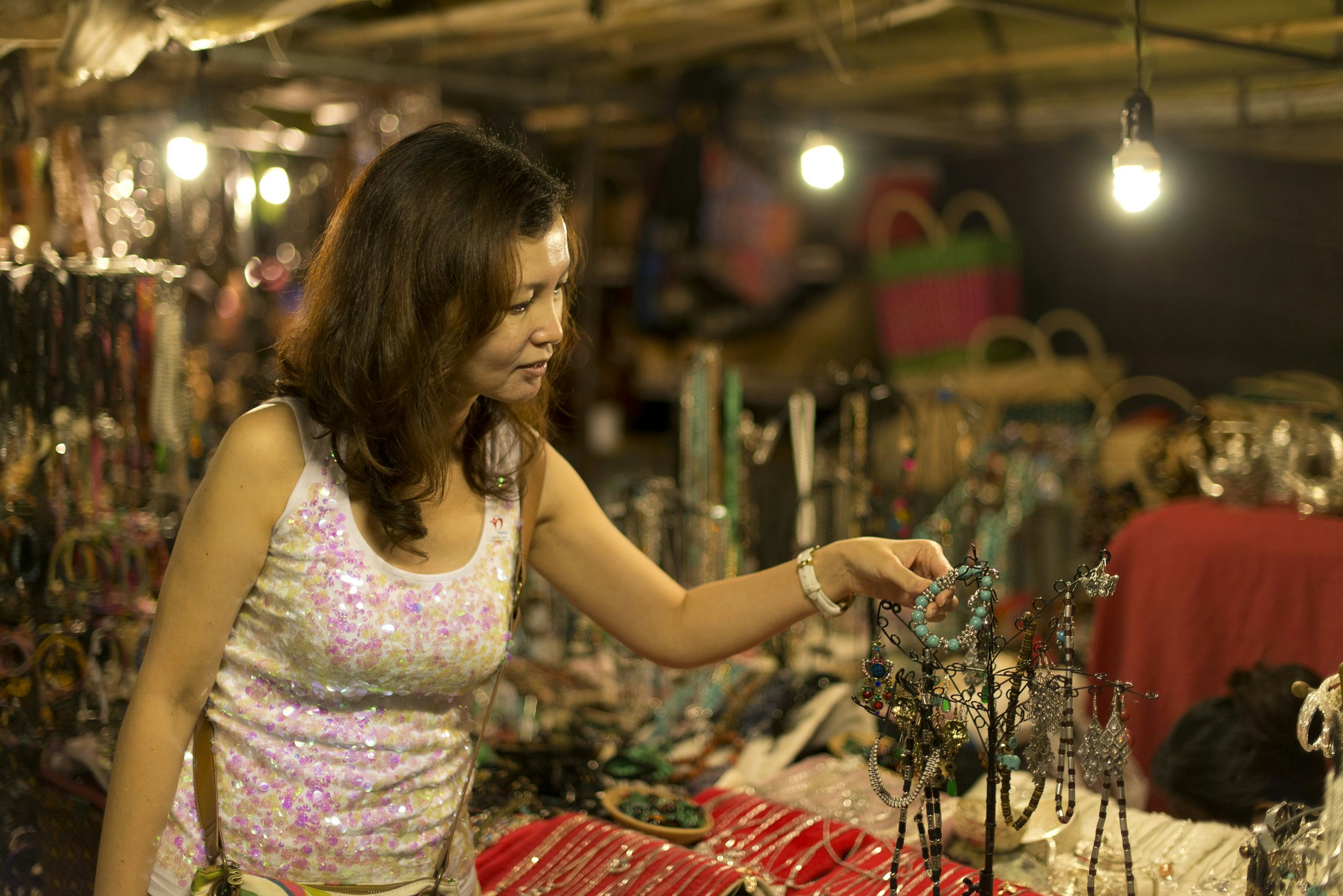
Bargaining is expected in markets and for transportation
It's important to haggle in markets in Cambodia, otherwise, the stallholder may "shave your head" (local vernacular for "rip you off"). Negotiation is also the rule when arranging share taxis, pickups, and local transportation like tuk tuks if ordering in person and not via a ride-hailing app. The Khmers are not ruthless hagglers, so a persuasive smile and a little friendly quibbling are usually enough to get a price that's acceptable to both you and the seller.
It's important to dress modestly
Avoid wearing swimsuits or scant clothing around towns in Cambodia, even in beach destinations. Wear a sarong or krama to cover up.
Tipping is appreciated
Tipping is not essential but is commonplace in establishments catering to tourists such as hotels and restaurants, and it is standard practice to tip tour guides and drivers on organized tours.
Local health care in Cambodia is basic
Do not visit Cambodia without medical insurance. Hospitals are very basic in the provinces and anyone who has a serious injury or illness while in Cambodia may require emergency evacuation to Bangkok. If you fall seriously ill in Cambodia you should head to Phnom Penh or Siem Reap, as these are the only places in the country with decent emergency treatment.
Pharmacies in the larger towns are remarkably well stocked and you don’t need a prescription to get your hands on anything from antibiotics to antimalarials.
When it comes to tap water, play it safe and avoid it where possible. Bottled water is widely available in Cambodia and many hotels and guesthouses have refill tanks. Ice is generally fine to use, as it is produced in bottled water factories around the country, a legacy of the French colonial period.

Elephant rides are not recommended
Though not yet illegal in Cambodia, elephant rides have been repeatedly called out by animal welfare groups as cruel and painful for the animal – some private companies are finally rethinking the practice . Do your research to ensure any animal sanctuary you'd like to visit is ethical and prioritizes the welfare of the inhabitants.
Stay safe in Cambodia with these top tips
The most common crime is bag or mobile-phone snatching, usually perpetrated by thieves on motorcycles. Smartphones are a particular target, so avoid using your phone on the side of the street, especially at night. Walking or riding alone late at night is not ideal, as there have been several incidents of solo women travelers being assaulted in isolated areas, usually after dark.
Most scams are fairly harmless, involving a bit of commission here and there for local drivers. There have been one or two reports of police set-ups in Phnom Penh, involving planted drugs, but these seem very rare and usually involve business owners. Beware the Filipino blackjack scam – don't get involved in any gambling with seemingly friendly folks unless you want to part with plenty of cash.
There is quite a lot of fake medication floating about the region, so only buy prescription drugs from reliable pharmacies or clinics. Be very careful if being offered chemical drugs on the street in Cambodia, as not only are they illegal but may be laced with all sorts of dangerous toxic substances.
Due to the presence of landmines and unexploded ordnance (UXO) in some rural areas, it is essential to stick to marked paths. Keep a close eye on small children in rural areas to make sure they don't stray and do not go off road if you're cycling.
Roads have improved massively in recent years, but conditions can vary widely from the dry to the wet season. Although motorcycles are a popular way to get around in Cambodia, do not attempt it if you're not an experienced driver. The tangled traffic in the big towns and cities is no place for a novice.
Run through this pre-departure checklist before you go
- Make sure your passport is valid for at least six months or you won't be allowed into Cambodia
- Arrange any recommended inoculations at a travel-health clinic
- Purchase travel insurance with decent health coverage
- Double-check to see if you need to arrange a visa before arrival
You might also like: Angkor Wat: everything you need to know about Cambodia's most iconic temple Siem Reap: 11 best things to do after you explore Angkor Wat Cambodia's less-traveled islands visitors need to know about
Explore related stories
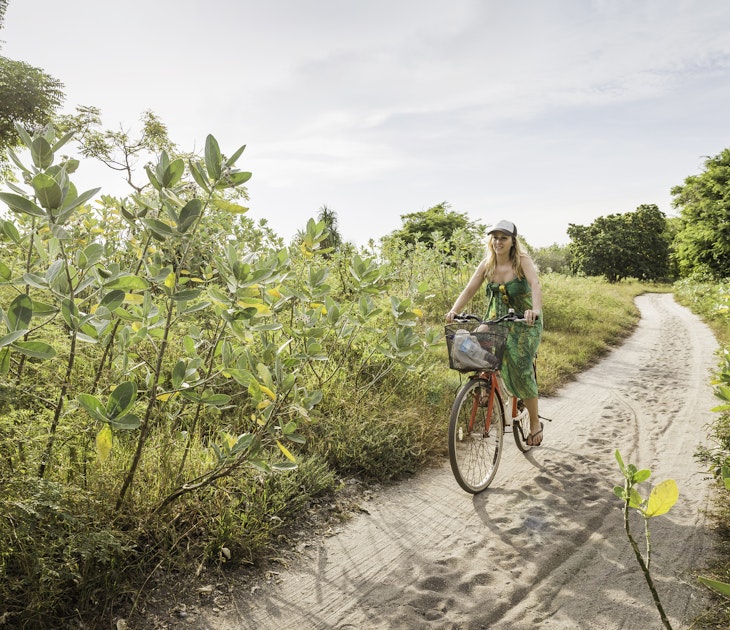
Budget Travel
Apr 21, 2024 • 6 min read
You can get a lot of bang for your buck on these three tiny islands off the west coast of Lombok – if you know where to look.
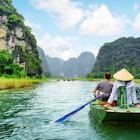
Mar 14, 2024 • 10 min read

Feb 24, 2024 • 8 min read

Feb 22, 2024 • 5 min read

Feb 3, 2024 • 7 min read

Jan 27, 2024 • 17 min read
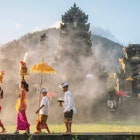
Jan 17, 2024 • 6 min read

Jan 5, 2024 • 20 min read

Dec 27, 2023 • 8 min read

Dec 15, 2023 • 7 min read

- 2 Weeks for Couple
- 2 Weeks for Family
- Thailand Lantern Festival
- Indonesia(Bali)
- South Korea
- China (HK, Taiwan)
- Itinerary Ideas
- Asia Highlights Travel Reviews
- Thailand Travel Reviews
- Vietnam Travel Reviews
- Cambodia Travel Reviews
- Japan Travel Reviews
- Myanmar Travel Reviews
- China Travel Reviews

How to Plan a Trip to Thailand and Cambodia (2024/2025)
Thailand and Cambodia are neighboring countries. Many visitors who make the journey to Southeast Asia plan a combined trip and visit both countries.
In this guide, we are going to look at how to plan a travel itinerary for a tour of Thailand and Cambodia.
- How Many Days are Needed?
- A Classic Thailand and Cambodia Itinerary
How Much Does a Cambodia and Thailand Trip Cost?
Best times to visit thailand and cambodia, visa and entry requirements for a thailand and cambodia trip, which country to enter first, how many days are needed for a trip to thailand and cambodia.
A well-rounded trip to Thailand and Cambodia typically requires a minimum of 10 days, although 2 weeks is recommended for a more relaxed and enriching experience.
Given Thailand 's larger size and abundance of attractions, many travelers allocate more time to explore its diverse landscapes and cultural offerings, spending around 7–9 days there. This often includes iconic destinations like bustling Bangkok, the cultural haven of Chiang Mai in the north, and an idyllic island in the south, such as family-friendly Phuket or romantically inclined Koh Samui.
In contrast, Cambodia 's compact size means that a visit of 3–5 days is often sufficient. Siem Reap, the second-largest city, is a must-visit for the awe-inspiring Angkor Wat, while Phnom Penh, the capital, offers additional cultural experiences with its temples and bustling markets, making it an appealing option if time allows.
Discover real reviews of Highlights Travel Family 's best-rated service across trusted platforms.
Thailand and Cambodia Itinerary: A Classic 12-Day Tour
A 12-day trip allows you to see the most popular attractions of both countries. Here's a favorite way to organize the itinerary:
Day 1: Arrive in Bangkok
Days 2-3: Bangkok City Tour
Day 4: Fly to Siem Reap
Days 5-6: Angkor Wat and Local Life Experience
- Day 7: Fly to Chiang Mai with a Transit in Bangkok
Day 8: A Memorable Elephant Experience in the Jungle of Chiang Mai
Day 9: Mountian Doi Suthep, Chiang Mai to Phuket
Days 10-11: Free Time in Phuket
Day 12: Phuket Departure
Upon your arrival in Bangkok, take some time to settle into your accommodation and recover from your journey. Consider exploring the local surroundings near your hotel for a gentle introduction to the city.
Immerse yourself in a comprehensive city tour of Bangkok, visiting iconic sites such as the Grand Palace, Wat Pho, and Wat Arun. Dive into the vibrant markets and savor the rich street food scene, making the most of your time in the bustling metropolis.
Board a flight to Siem Reap. Upon arrival, check into your hotel and spend the day exploring the local atmosphere, getting a taste of the unique culture and charm that Siem Reap has to offer.
Explore the awe-inspiring Angkor Wat complex, including Bayon Temple and Ta Prohm. Engage in an immersive experience of local village life and enjoy the vibrant night markets in Siem Reap, offering a glimpse into the daily lives of the people.
Day 7: Fly to Chiang Mai
Fly to Chiang Mai with a transit in Bangkok. Once in Chiang Mai, settle into your hotel and take the evening to unwind, perhaps exploring the local area at a leisurely pace.
Embark on a memorable elephant experience in the jungle surrounding Chiang Mai. Focus on ethical practices and learn about conservation efforts. Enjoy the evening at leisure in Chiang Mai, reflecting on the unique experiences of the day.
Begin the day with a visit to the sacred Doi Suthep temple, enjoying panoramic views of Chiang Mai. Later, catch a flight to Phuket. Upon arrival, check into your hotel and take some time to relax.
Enjoy free time in Phuket to unwind on the beaches, explore local markets, or partake in water activities. Consider taking a boat tour to nearby islands or exploring the enchanting Phang Nga Bay.
Conclude your journey in Phuket with some last-minute activities or shopping before departing for your home destination. Reflect on the diverse experiences from Bangkok to Phuket as you bid farewell to this captivating Southeast Asian adventure.
For more details on this 12-day Thailand and Cambodia tour . Or get more itinerary ideas to plan your 2-week dream trip>>>
All our tours can be adjusted to suit you. We can make a trip based on your interests, group size, and other requirements. Feel free to contact us .
>>> How to Plan 2-Week Southeast Asia Itineraries for Couples, Families, and More
Cambodia and Thailand are cheap countries. They can match a wide range of budgets. The cost of traveling in Cambodia is slightly lower than in Thailand by US$10–30 per day.
When exploring Southeast Asia, particularly Cambodia and Thailand, choosing a private tour is a wise decision, embodying an "affordable luxury." Our private tour provides excellent value for money, ensuring a seamless and high-quality experience with top-notch service.
Thailand and Cambodia, situated in close proximity, share similar climates. The period from November to April is deemed the optimal time for visiting both countries, offering sunny and dry weather that enhances the overall travel experience.
It's important to note that the Christmas/New Year holiday season is particularly busy, and planning ahead with reservations is advisable during this time. Share your interests and requirements with us , and we'll handle all the details, ensuring a seamless and enjoyable trip tailored to your preferences.
From August to early October, both nations experience the heaviest rainfall . Typically, these are short afternoon or dusk downpours that are unlikely to significantly impact your travel plans.
For those seeking vibrant festival experiences , April is an ideal time to visit for Cambodia and Thailand's New Year celebrations. Alternatively, November offers the enchanting Yi Peng Festival in Chiang Mai, providing a unique cultural experience.
We would suggest starting your journey in Thailand.
Bangkok, the capital of Thailand, serves as a major transportation hub, providing convenient flight connections and easy access to neighboring countries like Cambodia. Starting in Thailand not only facilitates smoother travel logistics but also allows you to gradually explore the unique charms of Southeast Asia.
Thailand allows visa-free entry from 64 countries, including the USA, the UK, Australia, Canada, France, Germany, and Norway. (If you do not qualify for the visa-free policy, you will need to apply for a visa to visit Thailand.)
However, Cambodia requires you to obtain a tourist visa, which can either be obtained online or when you arrive at Phnom Penh or Siem Reap Airport.
Ready to Plan Your Thailand and Cambodia Trip?
We provide a customized service for private tours. Our travel consultants will listen to and work to your ideas and answer any questions. We will create your dream trip based on your interests, travel length, and needs.
- 12-Day Best of Thailand and Cambodia Tour
- 12-Day Essential Thailand, Cambodia, and Vietnam Tour
- 15-Day Best of Thailand, Cambodia, and Vietnam Tour
You can find yet more Thailand travel itineraries on our Most Popular Thailand-Cambodia-Vietnam Tours page.
Why Asia Highlights (10,000+ reviews & 98.8% 5-star rating)
- Save Your Time:
- Less research, more enjoyment!
- Real-time 1V1 expert planning
- Maximize Your Flexibility:
- Personal local guide and ride
- Explore at your own pace
- Celebrate Your Journeys:
- Specially-crafted family adventures
- Celebrate milestones with style!
Get Inspired with Some Popular Itineraries
At Asia Highlights, we create your kind of journey — your dates, your destinations, at your pace. You can have any trip tailor made for your travel.
More Travel Ideas and Inspiration
Sign up to our newsletter.
Be the first to receive exciting updates, exclusive promotions, and valuable travel tips from our team of experts.
Why Asia Highlights
Where can we take you today.
- Middle East
- African Safari
- Travel Agents
- Loyalty Program
- Our Differences
- Privacy Policy
Address: Building 6, Chuangyi Business Park, 70 Qilidian Road, Guilin, Guangxi, 541004, China
Cambodia Visa for Thai Citizens
Online visa to travel to cambodia from thailand.
Thai citizens can now get their visa for Cambodia online. Apply in minutes using the simple eVisa system.
The eVisa for the Kingdom of Cambodia is an electronic travel authorization that allows eligible travelers from Thailand to request a tourist visa online.
The Cambodian eVisa for Thai citizens is the most popular type of visa for short-term stays . The online application is completely online—there’s no need to go in person to an embassy or consulate and wait in long lines to apply for a visa.
The guide below contains an overview of the Cambodia eVisa and the requirements to apply online from Thailand.
Do Thai Citizens Need a Visa To Enter Cambodia?
Yes, if you’re a Thai citizen you must have a visa for Cambodia.
Only a select few nationalities are exempt from this requirement.
Cambodian visa types for Thai visitors
Nationals of Thailand can get their Cambodian visa in 3 different ways:
- Online : Cambodia eVisa
- At the border : Cambodian visa on arrival
- At an embassy or consulate : Embassy visa
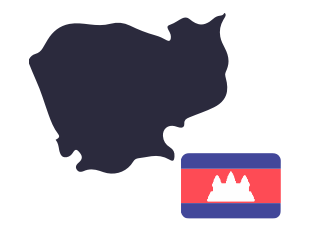
The Cambodia eVisa for Thai travelers is the best option for short-term stays. The application is quick and efficient, and border controls are much faster.
The Cambodia online visa allows a single entry into the country for a stay of up to 30 days . You can then request an extension while in Cambodia of up to 30 additional days.
If you wish to stay in Cambodia longer, or you’re planning on working or studying there, you’ll need to request a specific visa at an embassy or consulate.
Apply for a Cambodia Online Visa for Thai Citizens
Getting a Cambodia eVisa from Thailand is extremely easy . You just need to fill out an online application form, upload the required documentation, and pay the eVisa processing fee.

1- Fill in the electronic visa form for Thai citizens

2- Pay for the visa using a credit or debit card

3- Send the visa application to be reviewed
The entire application process takes about 10 minutes , and you can complete it from the comfort of your home.
The processing time of the Cambodia eVisa for Thai citizens is between 1 and 4 days , depending on the volume of applications.
To avoid unnecessary delays , please ensure that all the information provided in the online form is accurate. Even spelling mistakes may lead to delays.
Cambodia eVisa: Documents Required by Thai Nationals
At the moment of online application, Thai nationals must ensure they have all the following documents:
- Passport valid for a minimum of 6 months from the date of arrival in Cambodia
- Debit or credit card to pay the eVisa fee
- Scan of the biographical page of their passport
- Digital photograph
Before uploading the photograph, applicants should ensure it meets all the Cambodian visa photo requirements.
Completing the Cambodia eVisa Application from Thailand
Thai citizens must complete the Cambodian eVisa application form online, ensuring all the details they provide are correct. The application must contain the following information:
- Applicant’s details , including full name, date of birth, country of citizenship, and gender
- Passport details , including document number, issuing country, date of issuance and expiry
- Contact details , including phone number and email address
- Intended date of entry into Cambodia
After filling out the application form, travelers can proceed to the payment of the eVisa fee and submit their request.
Important: Thai citizens with dual nationality who possess 2 passports must use the same one to apply for the Cambodia eVisa and enter the country. Passports will be checked at border controls and must match the details on the approved eVisa.
Cambodia Entry Requirements for Nationals of Thailand
Your Cambodia eVisa is valid for 3 months. You have up to this amount of time to use your visa to enter, otherwise it will expire and you’ll need to apply for a new one.
Upon entry into Cambodia you’ll need to provide the following documents:
- Thai passport
- Cambodia visa
- Additional health documents (if required)
Usually, the required vaccinations for Cambodia are those for Measles, Mumps, and Rubella (MMR), hepatitis A, tetanus, polio, chickenpox, and yellow fever for travelers coming from a country with a high transmission rate.
Travel from Thailand to Cambodia
Travelers visiting Cambodia from Thailand may cross via 2 available land checkpoints: Cham Yeam, in Koh Kong province, and Poi Pet, in Banteay Meanchey province.
Thai visitors may also fly to one of the three available international airports:
- Phnom Penh International Airport
- Siem Reap International Airport
- Sihanoukville International Airport
In addition to land crossings from Thailand, it is also possible to enter Cambodia via land from Vietnam (Bavet – Svay Rieng province) or Laos (Tropaeng Kreal Border Post).
It is recommended to carry a printed copy of the eVisa for the duration of the trip.
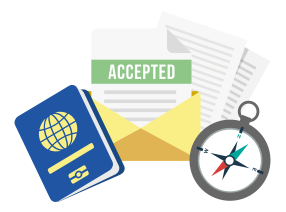
Cambodian Embassy in Thailand
Cambodia has an embassy in Bangkok, located at the following address:
Cambodian Embassy in Bangkok, Thailand Address: 518/4 Pracha Uthit Rd, Soi Ramkamhaeng 39, Wang Thonglang Bangkok 10310, Thailand
Thailand also has an embassy in Cambodia, at the following address:
Thai Embassy in Phnom Penh, Cambodia Address: No.196 Preah Norodom Boulevard, Sangkat Tonle Bassac, Khan Chamcar Mon Phnom Penh, Cambodia.
Update April 12, 2024
Information for u.s. citizens in the middle east.
- Travel Advisories |
- Contact Us |
- MyTravelGov |
Find U.S. Embassies & Consulates
Travel.state.gov, congressional liaison, special issuance agency, u.s. passports, international travel, intercountry adoption, international parental child abduction, records and authentications, popular links, travel advisories, mytravelgov, stay connected, legal resources, legal information, info for u.s. law enforcement, replace or certify documents.
Before You Go
Learn About Your Destination
While Abroad
Emergencies
Share this page:
Travel Advisory July 24, 2023
Cambodia - level 1: exercise normal precautions.
Reissued with obsolete COVID-19 page links removed.
Exercise normal precautions in Cambodia. Some areas have increased risks. Read the entire Travel Advisory.
Exercise increased precautions in:
- Phnom Penh due to crime.
- Very remote areas of Battambang, Banteay Meanchey, Pursat, Siem Reap, Pailin, and Kampong Thom provinces due to land mines.
Read the country information page for additional information on travel to Cambodia.
If you decide to travel to Cambodia:
- Enroll in the Smart Traveler Enrollment Program (STEP) to receive Alerts and make it easier to locate you in an emergency.
- Follow the Department of State on Facebook and Twitter .
- Review the Country Security Report for Cambodia.
· Visit the CDC page for the latest Travel Health Information related to your travel.
- Prepare a contingency plan for emergency situations. Review the Traveler’s Checklist .
Phnom Penh – Level 2: Exercise Increased Caution
Street crime, particularly phone and bag snatchings, occurs frequently in areas where foreigners gather; resistance can result in injury. Be aware of your surroundings at all times and to be extra vigilant when displaying items like jewelry, bags and cell phones in public. Violent crime, such as sexual assault and homicide, is common, sometimes against foreigners.
Do not physically resist any robbery attempt. Use caution when walking or driving at night.
Battambang, Banteay Meanchey, Pursat, Siem Reap, Pailin, and Kampong Thom provinces – Level 2: Exercise Increased Caution
Land mines and unexploded ordnance are found in very remote areas throughout Cambodia, and especially in Battambang, Banteay Meanchey, Pursat, Siem Reap, Pailin, and Kampong Thom provinces.
Do not touch unknown metal objects; instead notify the Cambodia Mine Action Center at 012-800-473/023-995-437. Use a local guide when walking in forested areas or dry rice paddies in these areas.
Embassy Messages
View Alerts and Messages Archive
Quick Facts
Six months.
One page is required per entry stamp; please note endorsement pages are not considered blank passport pages.
The import of local currency (Riel) is prohibited. When entering Cambodia foreign currency amounts over US $10,000 must be declared.
The export of local currency (Riel) is prohibited. Foreign currency can be taken out of the country up to the limit declared at customs on arrival.
Embassies and Consulates
U.s. embassy phnom penh.
#1, St. 96 (entrance on St. 51 between St. 96 and 102), Phnom Penh Telephone: 855-23-728-402, 051, or 234 Monday thru Friday 8:00 a.m. to 5:00 p.m. Emergency after-hours telephone: 855-23-728-000 Fax: 855-23-728-700 Email: [email protected] Facebook Twitter
Destination Description
Learn about the U.S. relationship to countries around the world.
Entry, Exit and Visa Requirements
Please visit the Embassy’s COVID-19 page for more information on entry/exit requirements related to COVID-19 in Cambodia.
You will need a valid passport and a Cambodian visa to enter Cambodia. Tourist and business visas are valid for one month from the date of entry into Cambodia. Cambodia offers on-line visa processing . You may also apply in person at the Cambodian Embassy located at 4530 16th Street NW, Washington, DC 20011, tel. 202-726-7742, fax 202-726-8381.
Tourists, diplomats, and business travelers may also obtain a Cambodian visa at the airports in Phnom Penh, Siem Reap, and at all major border crossings. Cambodian immigration officials at airports now collect fingerprints upon entry using an inkless, electronic process. You will need a passport valid for a minimum of six months beyond the date of entry into Cambodia.
If you remain in Cambodia beyond the date of your authorized stay, Cambodian immigration officials will likely impose a fine of $10 per day overstayed. In cases of excessive overstays, you may be arrested for violating immigration laws and detained as you undergo official deportation proceedings at your own expense. Deportation from Cambodia may result in your being prohibited from reentering Cambodia in the future. You should contact the nearest Cambodian embassy or consulate, or visit the Embassy of the Kingdom of Cambodia website for the most current visa information.
The U.S. Department of State is unaware of any HIV/AIDS entry restrictions for visitors to or foreign residents of Cambodia
Safety and Security
The Department of State is concerned that individuals and groups may be planning terrorist actions against U.S. citizens and interests, including at sites frequented by Westerners in Southeast Asia. Extremist groups in Southeast Asia have transnational capabilities to carry out attacks against locations where Westerners congregate. Although the extremist threat in Cambodia is considered low and terrorist attacks are not common, U.S. citizens residing in, or traveling to, Cambodia should exercise caution in clubs, discos, bars, restaurants, hotels, places of worship, schools, outdoor recreation venues, tourist areas, beach resorts, and other places frequented by foreigners. U.S. citizens should remain vigilant with regard to their personal security and avoid ongoing police enforcement actions, crowds, and demonstrations. See Department of State’s Worldwide Caution .
Land mines and unexploded ordnance are found in remote rural areas throughout Cambodia, and especially in Battambang, Banteay Meanchey, Pursat, Siem Reap, Kampong Thom, and Oddar Meanchey provinces. Travelers in these regions should never walk in forested areas or even in dry rice paddies without a local guide. Areas around small bridges on secondary roads are particularly dangerous. Travelers should not touch anything that resembles a mine or unexploded ordnance; they should notify the Cambodia Mine Action Center at 012-800-473/023-995-437.
Crime: Cambodia has a critical crime rate, including street crime. Military weapons and explosives are readily available to criminals despite authorities’ efforts to collect and destroy such weapons. Armed robberies occur frequently, and foreign residents and visitors, including U.S. citizens, are among the victims. The Embassy has also received reports that residences and hotel rooms of U.S. citizens in Phnom Penh were burglarized while the occupants were asleep.
The most common type of theft is “snatch and grab” robbery, and anything that can be quickly grabbed is at risk: cameras, jewelry, purses, backpacks, mobile phones, etc. Exercise caution and keep belongings out of sight if you travel via “tuk-tuk,” as passengers in these open-air vehicles have been targeted by thieves. If walking along the street, make yourself less of a target by carrying bags or items in your hand or on the shoulder that is furthest from the street. If someone attempts to rob you, you should surrender your valuables immediately, since any perceived resistance may be met with physical violence, including lethal force. The U.S. Embassy has received reports of violent robberies escalating into fatalities.
Pickpockets, some who are masquerading as beggars, are present in the markets and at the tourist sites. Sometimes they may act overly friendly, placing their hand on your shoulder or back to distract you in order to pick your pocket.
To avoid the risk of theft or confiscation of original documents, the U.S. Embassy advises its personnel and all U.S. citizens traveling to, or residing in, Cambodia to carry photocopies of their U.S. passport, driver's license, and other important documents and to leave the originals in a hotel safe or other secure place. The U.S. Embassy advises citizens not to give their passport as collateral for motorcycle rentals, hotels, etc. Local police rarely investigate reports of crime against tourists, and travelers should not expect to recover stolen items. It has also been reported that some police stations charge foreigners between $20 and $100 to file a police report.
Foreigners travelling to Cambodia should be aware of common scams targeting tourists, often involving card games. [MWP(P1] The Embassy has received reports of U.S. citizens being approached by individuals in public locations, such as popular shopping malls, and being invited to their homes where they end up participating in card games. These are often scams to steal tourists’ money. If you find yourself a victim of one of these scams, you should contact the U.S. Embassy.
Foreigners travelling to Cambodia should be aware of crime targeting tourists involving drugged drinks. The Embassy has received reports of U.S. citizens’ drinks being drugged at bars in order to incapacitate them for theft or sexual assault. Do not accept drinks from strangers and do not leave drinks unattended.
The U.S. Embassy advises citizens to be wary of scams involving individuals claiming they are in Cambodia and need financial assistance from the United States. The Embassy has determined that many of these requests are fraudulent and the individuals making the requests use false identities. In the past year, numerous confirmed media reports of large-scale scam operations have led to a crackdown by Cambodian authorities. These operations have been reported to lure non-Cambodians with false promises of gainful employment. Victims of this false recruitment have then been made to participate in the online/phone-based financial confidence scams.
See the Department of State and the FBI pages for information on scams.
There have been numerous reports of visitors receiving fake or novelty $50 and $100 bills from ATM machines and banks across Cambodia. When receiving money from ATMs or bank tellers, you should count and examine the money while still in the presence of the ATM camera or bank teller. The fake money typically has a different feel than real U.S. currency and often has markings on the lower left that indicate it is for novelty purposes. If a suspicious bill is discovered, it should be shown to the ATM camera or teller, and the bank should be notified immediately.
The U.S. Embassy advises its personnel who travel to the provinces outside of Phnom Penh to exercise caution outside the provincial towns at all times. Many rural parts of the country remain without effective policing. Avoid walking alone after dusk anywhere in Sihanoukville, especially along the waterfront. You should be particularly vigilant during annual festivals and at tourist sites in Phnom Penh, Siem Reap, and Sihanoukville, where there have been marked increases in motorcycle “snatch and grab” thefts of bags and purses.
If you are visiting Cambodia, you should practice sound personal security awareness by varying your routes and routines, maintaining a low profile, not carrying or displaying large amounts of cash, not wearing flashy or expensive jewelry, and not walking alone after dark. In addition, you should travel by automobile and not use local moto-taxis or cyclos (passenger-carrying bicycles). These vehicles are more vulnerable to armed robberies and offer no protection against injury when involved in traffic accidents.
U.S. citizens are advised not to engage in commercial surrogacy arrangements in Cambodia. In October 2016, the Government of Cambodia issued an official proclamation banning commercial surrogacy in Cambodia. Please keep in mind that U.S. citizens and other foreigners in Cambodia are subject to Cambodian laws and procedures.
Although gambling and casinos are legal in Cambodia, the U.S. Embassy strongly encourages all travelers to be cautious in choosing to visit casinos or related gambling centers in Cambodia. The U.S. Embassy is aware of numerous reported incidents at casinos throughout Cambodia. In the past year, these incidents such as fires at casinos resulting in multiple fatalities, violent assaults, murders, and suicides under suspicious circumstances have occurred.
Victims of Crime: Report crimes to the local police and contact the U.S. Embassy at 023-728-000. Remember that local authorities are responsible for investigating and prosecuting crimes.
In cases of sexual assault, U.S. citizen victims should contact the U.S. Embassy first before contacting local police or authorities.
See our webpage on help for U.S. victims of crime overseas .
- help you find appropriate medical care
- assist you in reporting a crime to the police
- contact relatives or friends with your written consent
- explain the local criminal justice process in general terms
- provide a list of local attorneys
- provide our information on victim’s compensation programs in the U.S .
- provide an emergency loan for repatriation to the United States and/or limited medical support in cases of destitution
- help you find accommodation and arrange flights home
- replace a stolen or lost passport
Domestic Violence: U.S. citizen victims of domestic violence may contact the Embassy for assistance.
Tourism: The tourism industry is unevenly regulated, and safety inspections for equipment and facilities do not commonly occur. Hazardous areas/activities are not always identified with appropriate signage, and staff may not be trained or certified either by the host government or by recognized authorities in the field. In the event of an injury, appropriate medical treatment is typically available only in/near major cities. First responders are generally unable to access areas outside of major cities and to provide urgent medical treatment. U.S. citizens are encouraged to purchase medical evacuation insurance .
Local Laws & Special Circumstances
Criminal Penalties: You are subject to local laws. If you violate local laws, even unknowingly, you may be expelled, arrested, or imprisoned. Penalties for possessing, using, or trafficking in illegal drugs in Cambodia are severe, and convicted offenders can expect long jail sentences and heavy fines. If you break local laws in Cambodia, your U.S. passport won’t help you avoid arrest or prosecution.
The same rights and protections afforded those accused of a crime in the U.S. are not guaranteed in Cambodia, and the judicial process may be influenced by political, personal, and financial connections. In both the criminal and civil judicial systems, resources devoted to the investigation/discovery and trial process fall far below the standard expected in the United States. Cambodia routinely employs pre-trial detention for those charged with criminal offenses, sometimes for long periods of time before a trial is scheduled. Prison conditions in Cambodia are substandard and overcrowded, with little access to health care or basic nutritional requirements.
U.S. citizens in Cambodia should be aware that there are limits to the assistance the Embassy can offer to those with concerns about due process or the fairness of their trial, as the Embassy is unable to interfere in the legal processes of a host country.
You can be prosecuted in the United States for engaging in sexual conduct with children or for using or disseminating child pornography in a foreign country regardless of the legality of these activities under that country’s laws. Counterfeit and pirated goods are illegal in the United States, and if you purchase them in a foreign country, you may be breaking local law as well.
Arrest Notifications: If you are arrested or detained, ask police or prison officials to notify the U.S. Embassy immediately. See our webpage for further information.
Faith-Based Travelers: See our following webpages for details:
- Faith-Based Travel Information
- International Religious Freedom Report – see country reports
- Human Rights Report – see country reports
- Hajj Fact Sheet for Travelers
- Best Practices for Volunteering Abroad
LGBTI Travelers: While there are no legal restrictions on same-sex sexual relations or the organization of LGBTI events in Cambodia, same sex marriage is not permitted. While Cambodians are relatively tolerant toward foreigners, LGBTI Cambodians routinely face discrimination and harassment, especially outside major urban areas. Public displays of affection are generally frowned upon for couples of any sexual orientation.
See our LGBTI Travel Information page and section six of our Human Rights report for further details.
Travelers Who Require Accessibility Assistance: While in Cambodia, individuals with disabilities may find accessibility and accommodation very different from what they find in the United States. Currently, except for buildings and hotels that have been built under international standards, most public places and public transportation are not accessible. Persons with disabilities will face difficulties with Cambodia’s sidewalks, rest rooms, road crossings, and tourist areas.
Students: See our Students Abroad page and FBI travel tips .
Women Travelers: There have been reports of sexual assaults in the vicinity of drinking establishments and possible drugs being used to incapacitate female travelers. See our travel tips for Women Travelers .
Water Festival: During this annual festival, which takes place in November, the population in Phnom Penh increases significantly as millions of Cambodians from every town and province flock to the capital for three days. For personal safety and security, you should avoid crowded areas near the riverfront during the Water Festival holiday.
Customs: Cambodian customs authorities may enforce strict regulations concerning temporary importation into or export from Cambodia of items such as medications, firearms, antiquities, or ivory. It is advisable to contact the Embassy of Cambodia in Washington D.C. for specific information regarding customs requirements.
Restrictions on Freedom of Expression and Association: There are freedom of speech restrictions in Cambodia. Anyone who criticizes or insults the King by any means could face between one to five years in prison. This ban includes insults or criticism made online and via social media. The government of Cambodia has used libel and slander laws to restrict public discussion on topics it deems sensitive or against its interests.
Dual Nationality: Dual nationality is allowed under Cambodia's 1996 nationality law. However, if you have Cambodian nationality and possess another nationality, you may be viewed as a Cambodian citizen in any court proceedings and face stricter sentences.
Business Transactions: Some U.S. citizens have reported threats of personal injury, extortion, detention, or kidnapping related to personal business disputes, in particular those involving real estate. If you are planning to engage in real estate or other significant financial transactions, please proceed with caution and retain the appropriate legal counsel.
Financial Transaction: The U.S. dollar is widely used, especially for larger transactions, and most prices are quoted in dollars. Ripped, torn, or stained U.S. bills are not accepted. Authorities encourage greater use of the Cambodian riel, but it is less favored and is mostly given to tourists as change for dollar purchases. The riel is commonly used in smaller towns and rural areas. Credit cards are accepted at some establishments within Cambodia, and a number of banks in Phnom Penh accept credit cards for cash advances. Credit cards are often subject to a service charge. Banks and major hotels accept travelers' checks but usually charge a service fee. Several international banks operate ATM machines that allow travelers to obtain U.S. dollar currency in Phnom Penh, Siem Reap, and other urban centers. Personal checks are not generally accepted. Several banks serve as Western Union agents, to which funds can be wired, including in Phnom Penh, Siem Reap, Sihanoukville, and other provincial cities. Information on Western Union can be found at their website .
Photography: Taking photographs of anything that could be perceived as being of military or security interest — including government buildings, military installations, airfields, and bridges — may result in problems with the authorities and confiscation of your camera.
Medical facilities and services in Cambodia do not meet international standards. Both Phnom Penh and Siem Reap have a limited number of internationally run clinics and hospitals that can provide basic medical care and stabilization. Medical care outside of these two cities is almost non-existent. Local pharmacies provide a limited supply of prescription and over-the-counter medications. Because the quality of locally obtained medications can vary greatly, make sure to bring a supply of your medications adequate for the duration of your stay in Cambodia. You should be wary of purchasing local medication. Counterfeit medication is readily available, often indiscernible from authentic medication, and potentially lethal.
Be aware that neither U.S. Medicare nor Medicaid apply overseas.
Medical Insurance: Make sure your health insurance plan provides coverage overseas. Most care providers overseas only accept cash payments. See our webpage for more information on insurance coverage overseas. Visit the U.S. Centers for Disease Control and Prevention for more information on what type of insurance you should consider before you travel overseas.
Supplemental insurance to cover medical evacuation is strongly recommended.
Always carry your prescription medication in original packaging, along with your doctor’s prescription. Check with the government of Cambodia to ensure the medication is legal in Cambodia. Always, carry your prescription medication in the original packaging with your doctor’s prescription.
Be careful if purchasing off-brand medication from pharmacies in Cambodia. Drugs sold in pharmacies can be fake and possibly dangerous.
Malaria, Dengue and Tuberculosis are serious health concerns in Cambodia. For further information, please consult the CDC .
Vaccinations: Be up-to-date on all vaccinations recommended by the U.S. Centers for Disease Control and Prevention.
Further health information:
- World Health Organization
- U.S. Centers for Disease Control and Prevention (CDC)
Air Quality: Visit AirNow for information on air quality at U.S. Embassies and Consulates.
Travel and Transportation
Road Condition and Safety: You should not drive at night in Cambodia outside of city limits. Roads between major areas are adequate; however, roads leading to rural areas are poor. During the rainy season, road conditions deteriorate considerably, and roadside assistance is non-existent. Cambodian drivers routinely ignore traffic laws and vehicles are poorly maintained. Intoxicated drivers are commonplace, particularly during the evening hours. Travel is recommended in daylight between the hours of 6:30 a.m. and 5:30 p.m. There are also frequent bus accidents. Serious flooding occurs throughout Cambodia from June through November. Travel on unpaved or dirt roads is difficult after heavy rainfall. The National Route highways are the only roads that can be traveled, with caution, during this time of the year.
Traffic Laws: In the event you are in a traffic accident, you should cooperate with the police. You should also contact your insurance company for guidance in dealing with the other party and the police. To avoid the risk of theft or confiscation of original documents, the U.S. Embassy advises its personnel and all U.S. citizens traveling to, or residing in, Cambodia to carry photocopies of their U.S. passport, driver's license, and other important documents and to leave the originals in a hotel safe or other secure place.
While in Cambodia, you may encounter road conditions that differ significantly from those in the United States. Traffic in Cambodia is composed of a mix of automobiles, commercial trucks, motorcycles, bicycles, and tuk tuks. As a result of poor roads, driver intoxication, and disregard for traffic laws, traffic accidents are a common occurrence. You should exercise great caution in moving through the country, regardless of mode of transportation.
Public Transportation: Travelers should exercise caution when using inter-city buses, including those to popular tourist destinations such as Siem Reap and Sihanoukville. Despite the wide availability of moto-taxis, you should not use them due to safety concerns. Be vigilant if traveling by “tuk-tuk” or “cyclo” as personal belongings can be easily stolen. Organized emergency services for victims of traffic accidents are non-existent outside of major urban areas, and those available in major urban areas are inadequate.
See our Road Safety page for more information. Visit the website of Cambodia’s national tourist office and national authority responsible for road safety .
Aviation Safety Oversight: As there is no direct commercial air service to the United States by carriers registered in Cambodia, the U.S. Federal Aviation Administration (FAA) has not assessed the government of Cambodia’s Civil Aviation Authority for compliance with International Civil Aviation Organization (ICAO) aviation safety standards. Further information may be found on the FAA’s safety assessment page .
Maritime Travel: The Commandant of the Coast Guard has determined that effective anti-terrorism measures are not in place in Cambodia ports and has imposed conditions of entry on vessels that arrive in U.S. ports having visited ports in Cambodia. Mariners and passengers on commercial vessels traveling through the ports of Cambodia should exercise increased caution.
Mariners planning travel to Cambodia should also check for U.S. maritime advisories and alerts at Maritime Security Communications with Industry (MSCI) Web Portal | MARAD (dot.gov) . Information may also be posted to the U.S. Coast Guard homeport website , and the NGA broadcast warnings website (select “broadcast warnings”).
For additional travel information
- Enroll in the Smart Traveler Enrollment Program (STEP) to receive security messages and make it easier to locate you in an emergency.
- Call us in Washington, D.C. at 1-888-407-4747 (toll-free in the United States and Canada) or 1-202-501-4444 (from all other countries) from 8:00 a.m. to 8:00 p.m., Eastern Standard Time, Monday through Friday (except U.S. federal holidays).
- See the State Department’s travel website for the Worldwide Caution and Travel Advisories .
- Follow us on Twitter and Facebook .
- See traveling safely abroad for useful travel tips.
Review information about International Parental Child Abduction in Cambodia . For additional IPCA-related information, please see the International Child Abduction Prevention and Return Act ( ICAPRA ) report.

Travel Advisory Levels
Assistance for u.s. citizens, cambodia map, learn about your destination, enroll in step.

Subscribe to get up-to-date safety and security information and help us reach you in an emergency abroad.
Recommended Web Browsers: Microsoft Edge or Google Chrome.
Make two copies of all of your travel documents in case of emergency, and leave one with a trusted friend or relative.
Afghanistan
Antigua and Barbuda
Bonaire, Sint Eustatius, and Saba
Bosnia and Herzegovina
British Virgin Islands
Burkina Faso
Burma (Myanmar)
Cayman Islands
Central African Republic
Cote d Ivoire
Curaçao
Czech Republic
Democratic Republic of the Congo
Dominican Republic
El Salvador
Equatorial Guinea
Eswatini (Swaziland)
Falkland Islands
France (includes Monaco)
French Guiana
French Polynesia
French West Indies
Guadeloupe, Martinique, Saint Martin, and Saint Barthélemy (French West Indies)
Guinea-Bissau
Isle of Man
Israel, The West Bank and Gaza
Liechtenstein
Marshall Islands
Netherlands
New Caledonia
New Zealand
North Korea (Democratic People's Republic of Korea)
Papua New Guinea
Philippines
Republic of North Macedonia
Republic of the Congo
Saint Kitts and Nevis
Saint Lucia
Saint Vincent and the Grenadines
Sao Tome and Principe
Saudi Arabia
Sierra Leone
Sint Maarten
Solomon Islands
South Africa
South Korea
South Sudan
Switzerland
The Bahamas
Timor-Leste
Trinidad and Tobago
Turkmenistan
Turks and Caicos Islands
United Arab Emirates
United Kingdom
Vatican City (Holy See)
External Link
You are about to leave travel.state.gov for an external website that is not maintained by the U.S. Department of State.
Links to external websites are provided as a convenience and should not be construed as an endorsement by the U.S. Department of State of the views or products contained therein. If you wish to remain on travel.state.gov, click the "cancel" message.
You are about to visit:
Going from Thailand to Cambodia
- train Trains
- directions_bus_filled Bus
- flight_takeoff Plane
- directions_boat Boats
- local_taxi Transports Bangkok
- airplane_ticket Flights to Thailand
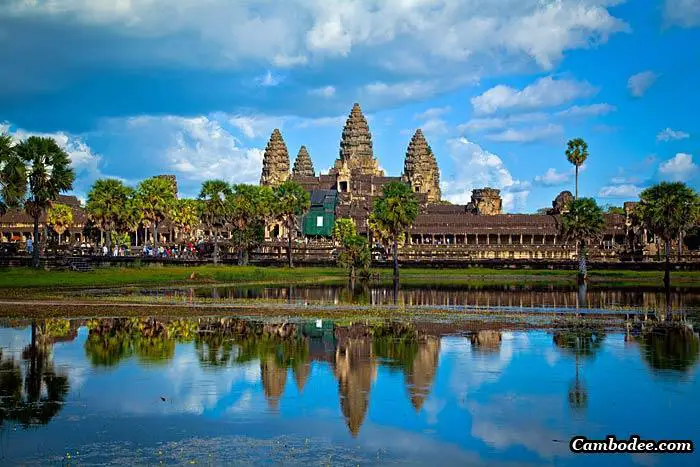
Direct buses to Cambodia
arrow_circle_right Book Bangkok-Siem Reap tickets online
arrow_circle_right Book Bangkok-Phnom Penh tickets online
arrow_circle_right Book bus tickets for trips in Cambodia

Going to Cambodia through Trat
Angkor, the best place on earth .

arrow_circle_right See pratical infomation about Siem Reap
Practical guide to visit Angkor

arrow_circle_right See Angkor Practical guide (in French)
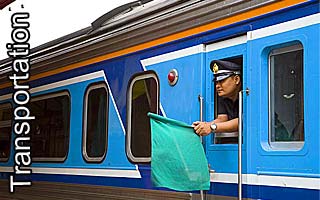
Young Pioneer Tours

How to take the train from Thailand to Cambodia
At YPT we love taking an epic train journey and taking the train from Thailand to Cambodia is very much is very much on this list. How though does one go about doing this? Here is the YPT guide on how to take the train from Thailand to Cambodia.
To read about our top Epic Train Journeys click here .
Taking the train from Thailand to Cambodia – the easy route
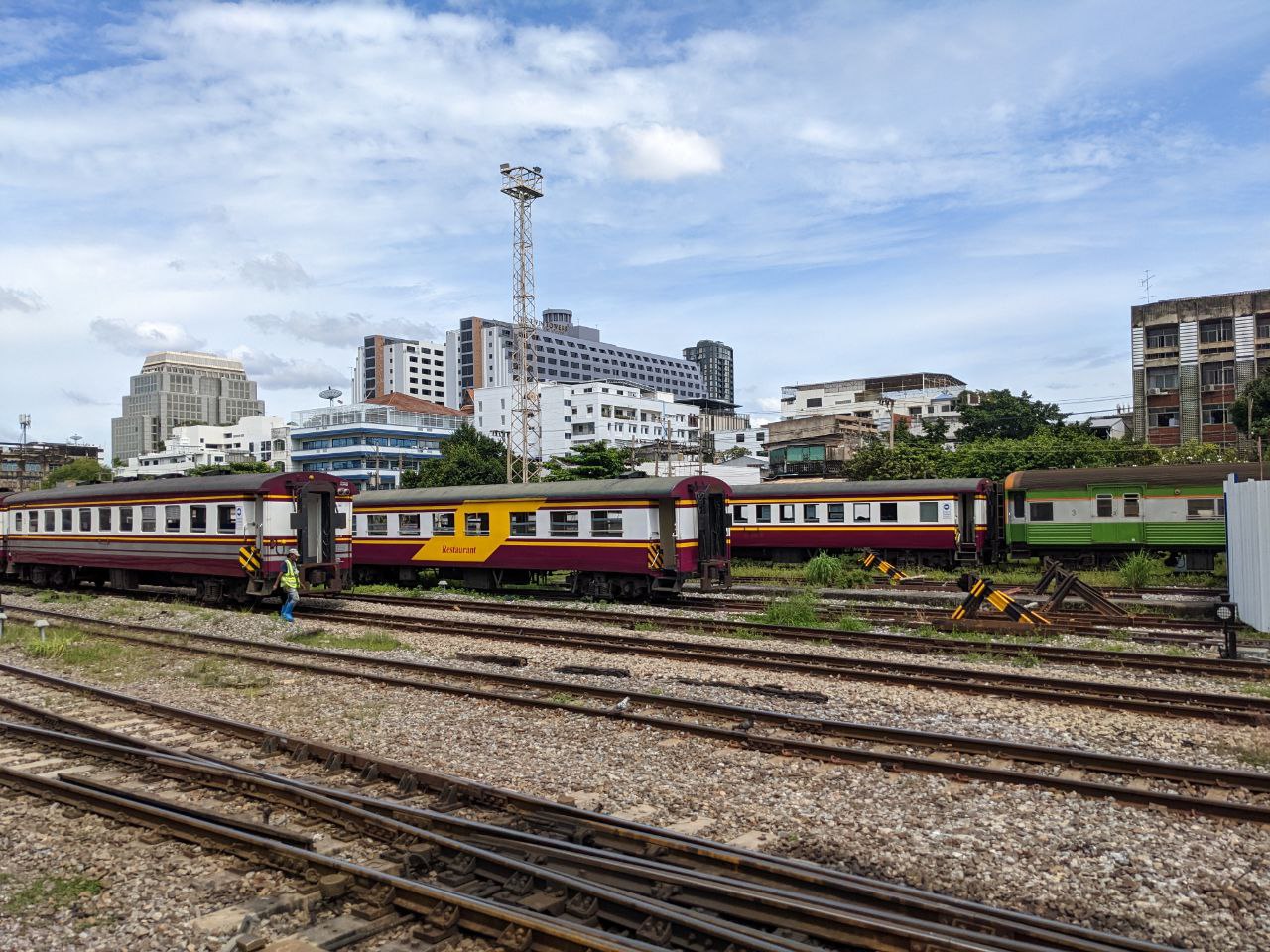
When we say taking the train from Thailand to Cambodia by the easy route we mean taking the train from Bangkok to Bang Klong Luk on the border with Cambodia and the city of Poipet.
To do this is not only really simple, BUT really cheap if you do not use an agent, with even agents telling you the same. Simply go to the main train station in Bangkok, namely Hua Lampong and buy your ticket for 49 Baht, or like $1.25. There is only 3rd class here, but that price for a 5 hour journey you cannot argue.
Note when buying train tickets from Bangkok to Poipet you can only buy them on the day of departure and departures are at around 5.55 am, 11.15 am and 13.05. Technically the train takes 5 hours and 30 minutes, but this is very much subject to change.
What is it like to ride a 3rd class train in Thailand?
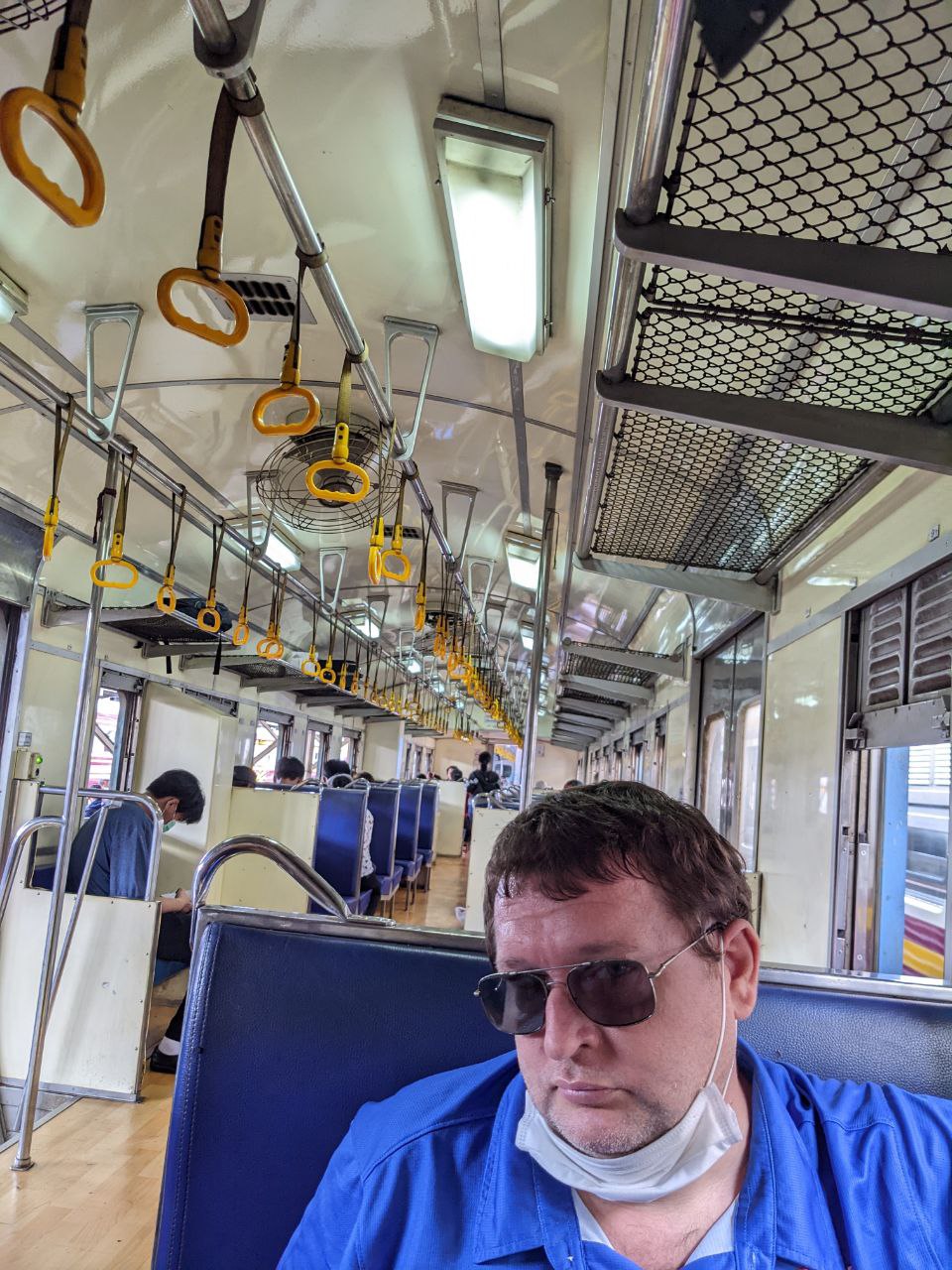
When you travel around other parts of Thailand there are different trains and indeed different classes. This is not the case on this route, so buckle in for the ride. And by that we mean that this is very much not tourist train, but one designed for locals. Expect it to be very busy and to guard your chair literally with your life.
It is though an old school train, which certainly has its charm. You can keep the windows open, lean out of them and even sit in the private conductor cabins and smoke, if that is your thing.
You will also not go wanting for food an drinks with Thai hawkers bringing around rice dishes and drinks, although fine-dining, or even up to Thai street food standards it is not.
What you do get though is truly old school train journey through sublime Thai countryside.
What to do when you arrive in Aranyaprathet province?
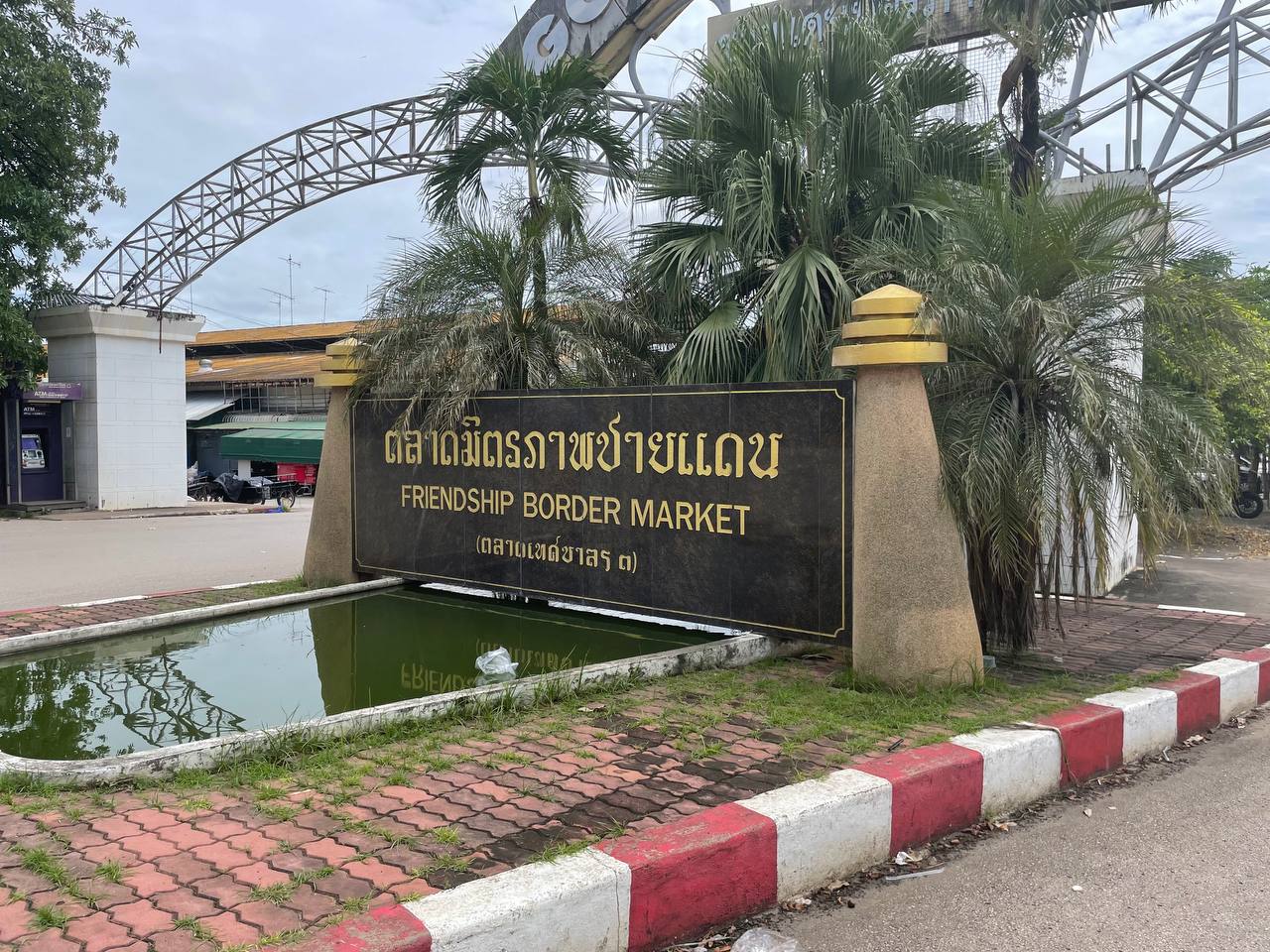
Aranyaprathet is both the city and the province, with it being the second to last stop before the terminal at the Ban Klong Luk – Poipet border. If you are planning to stay the night then get off at the former, if you want to directly cross the border do the later. There is technically a Border Hotel at Ban Klong Luk, but it appears to be in a constant state of sold out.
Aranyaprathet Town itself has a good few hotel and dining options, but for some adventure head to the Border Motel, which as you might have guessed is near the border…..
Rooms here are less than 10 dollars a night, they have a pool and you will find simply amazing street food – note the squid picture. There are also an abundance of 7-Eleven’s here, which it is worth noting are cheaper than in Cambodia.
To read about 7-Eleven Cambodia click here .
And last, but not least you have the border itself. Should you need a visa that can be purchased here, otherwise you just breeze through.
To read about Ban Klong Luk – Poipet Border click here .
Can you take the train from Bangkok to Phnom Penh
This was technically possible from 2019, but was stopped due to Covid. Hopefully it will return, but alas not for now. One day though this could be part of much larger China to Singapore route.
If though you are really into trains then you can actually plan your trip around the once a week train from Poipet to Phnom Penh, which is nowhere near as cheap and takes 10 whopping hours.
How does it rank in the worlds epic train journeys?
Taking the train from Thailand to Cambodia might not be epic in the traditional sense of the word, but in our mind at least it is not only a great excuse for some people watching, but a very viable alternative to merely taking the bus!
And that is how you take the train from Thailand to Cambodia! If you want to see both countries, as well as Vietnam with YPT then join our Southeast Asian Adventure .
About Post Author

Gareth Johnson
Gareth Johnson is the founder of Young Pioneer Tours and has visited over 180+ countries. His passion is opening obscure destinations to tourism and sharing his experience of street food.
See author's posts
- Suspendisse tincidunt nunc nec
Tripadvisor
Latest news.

North Korea will reopen in 2024 – tour prices will rise

Libya tourist e-visa scheme now available

Dave Kitson named Nauru Football Manager

An American in South Korea Heads North (Part 1)
- Terms & Conditions
- Payment Policy
- North Korea Tours – 2017 Tours
- Tour Extensions
- Independent Tours
- North Korea FAQ
- Our Terms and Conditions
- Our Payment Policy Terms
©YoungPioneerTours.com 2024. All rights reserved.
The Indefinite Journey
Getting from trat, thailand to cambodia – making our way to sihanoukville and disaster strikes.

Thailand Road to Hat Lek Border from Trat

We took off for Cambodia today. We got an early start, but went the wrong way for a few kilometers before we realized it. It only set us back about a half an hour. It was a nice ride as we chugged along at a good rate, and besides the oppressive heat of the day, no problems. We were going down the Cambodia/Thailand border down a small strip of Thailand on the Bay of Thailand. The ride was beautiful and we stopped off and relaxed by the water for a little while and fed Buddha and took a break. Were were 20km from the border and the process to leave Thailand was very easy and effective. We crossed into Cambodia and the border immigration and customs at Hat Lek and Cham Yeam.
Hat Lek - Cham Yeam Border - Thailand To Cambodia

Getting from Trat, Thailand to Cambodia - Hat Lek - Cham Yeam Border
Hat Lek is a dirty border with a better Thai side for services and shopping then the Cambodia side at Cham Yeam which was little more than a few small buildings. Once we got to the Cambodian side, we got hounded by "Border Helpers" who insisted that their services were essential, and the only way we could get through the border. For once in our travel life, we allowed a guy to help us and were surprised how easy the crossing was. No problems with Buddha, the bikes or immigration.
Although it took us a little while to get through and about 40 dollars in visa fees, we were on our way without a hitch and no customs fees whatsoever for the bikes. We were a little sad to leave Thailand although it was not our favorite place in Southeast Asia. Maybe it was the places we went to or the weather, but we were spending entirely too much money in an Asian country that is nearly double anywhere else. So we were also pretty happy to be in Cambodia where we hear it is cheap.
Highway 48 - Cambodia

It was already 3pm and our final destination would be Sihanoukville in the south of Cambodia. We were told it was going to be another 300km and there was no way we would make that before nightfall so we decided to stay a night in Koh Kong. Nothing too remarkable about Koh Kong. It's a dingy little border town with a few decent hotels, restaurants, and a lot of dirt and trash lying around. Going from Thailand to Cambodia was like going from the United States into Tijuana Mexico, from nice to dingy.
Cambodia has a lot of trash thrown everywhere and plastic bags along the highways. The roads weren't as nice as Thailand, but still not as bad as Laos. We settled on a 20 dollar room in Koh Kong on the waterfront that was nice. In fact, the best bed we have had yet in Southeast Asia!! I think it might have been a tempur pedic, but maybe it was just new and we couldn't feel springs in our backs for once. We putted around town and had some dinner and called it a night. The next day, we would be getting up early to make 300 miles in a day to Sihanoukville and we set the alarm for 6am. We woke up the following morning and decided to eat a good breakfast before leaving to keep us fueled for the long ride.
Leaving Koh Kong to Sihanoukvill on Hwy 48
We headed out on Highway 48 which is a nicely paved road with wide lanes and little traffic. Really one of the most enjoyable riding days we have had. We were worried that we wouldn't be able to make 300km in a day if the roads were like Laos, but they were as good or better than Thailand's roads. The border roads to Koh Kong, were not indicative of the roads we were on now.
We traveled through the Cardamom National Protected Forest. It was beautifully mountainous terrain, with gentle sweeping turns and manageable hills,nothing like Laos. We rolled through river villages, stopped here-and-there and hob-knobbed with the locals while getting gas, or having a soda along the way. It was absolutely enjoyable and we were making great time at around 60-70km per hour. Really beautiful part of Cambodia and one of the most remote in Southeast Asia.
Highway 4 to Sihanoukville

Tragedy Strikes - Wreck #4 on Hwy 4
We got to the end of highway 48 and hit highway 4 which is the main artery from Sihanoukville and the Capital City Phnom Penh and our enjoyable trip suddenly, like so many things on our trip, became treacherous. It seems like when things are going great, tragedy strikes. We rolled along Highway 4, which was excellently paved, but a little more narrow than 48 and 10 times the traffic. It wasn't 10 km into our 85km last leg to our destination when some cars coming from the opposite direction were trying to pass trucks and ran us off the road. It was either head on with the car or off the road... So I went off the road.
There was a 5 foot wide gravel shoulder of red dirt and rocks to our left. There was a drop of about a 6 inches to get down to it from the pavement and I made the transition rather smoothly considering my anger at being forced off the road. I looked in my mirror and Shelly did great too!! I was so proud of her. As we rode the dirt for a little while at decreased speed, looking for a place to get back on the highway, I looked in my mirror and Shelly was down!
Assessing the Damage
I turned around panicked and rode back to her. She was alright and so was Buddha, but Shelly had over corrected a little on the gravel and slid. She scraped her chest a little, bumped her chin, and scraped her right knee. Other than that unscathed. Her bike however got messed up pretty good. Broken headlight, rear brake pedal bent into the frame, her right engine cover-plate was busted, and her right foot peg as bent back. She also broke her front faring. I pounded her brake pedal back to a usable position and her foot peg and we got back on the road.
Limping Our Way to Sihanoukville
The next 75 km was grueling. We decided not to risk getting run off the road on the busy Sunday oncoming traffic going to Phnom Penh and we stayed right behind a big Angkor Beer truck the rest of the way at 50-60 km per hour, not the most scenic way to travel, and breathing the truck exhaust, but definitely the safest, Anytime the truck passed, we would pass with it. There is a universal law in southeast Asia, the bigger you are vehicle-wise, the right-away goes to you. We weren't going to get run off the road again, so we just tucked in behind this truck and used it as a shield.

Arriving In Sihanoukville
Our room is nice and the staff here are AMAZING!!! It's not cheap, as nothing is here in this town. Where is this "cheap Cambodia" we heard so much about? We don't know how long we are going to stay here, but we do need to get Shelly's bike fixed before going 250km back to Phnom Penh where we will try to sell the bikes and end this madness and dangerous roads of Cambodia.
Change In Perspective
We set out on this trip to accomplish something for ourselves. Do something different. Live. We have done that, but when the wreck happened earlier in the day, we realized that we could have easily died. Is doing something different and for ourselves, worth dying? Our gut is telling us to quit, sell the bikes and take buses the rest of the way around Cambodia and back to Saigon. We have a lot we need to do with our Divemaster planned in Honduras later this year and those plans will be ruined if we have broken femurs.
Our intuition is telling us to stop the motorbike tour, relax in Sihanoukville to lick our wounds and allow Shelly to get healthy from this wreck and move on from here knowing we did a great job on our motorbike tour of Southeast Asia . It is disappointing however that it ended the way it did.
Click Below to Share this Article on Social Media:
- Click to share on Twitter (Opens in new window)
- Click to share on Facebook (Opens in new window)
- Click to share on Pinterest (Opens in new window)
- Click to share on LinkedIn (Opens in new window)
Tell us what you think! Cancel reply
This site uses Akismet to reduce spam. Learn how your comment data is processed .
Thailand Visa » Travel to Thailand » eVisa to Travel from Cambodia to Thailand
eVisa to Travel from Cambodia to Thailand

Many people visit both Thailand and Cambodia when traveling around southeastern Asia.
When planning a trip, tourists must bear in mind that each country has its own visa policy and entry requirements.
Some visitors need a Thai visa to cross the border between Cambodia and Thailand . This article explains who should apply online and how to travel from Cambodia to Thailand with an eVisa .
Do I Need a Visa to Enter Thailand from Cambodia?
Whether or not a visitor needs a visa to travel from Cambodia to Thailand depends on 2 main factors:
- Nationality
- Length of stay
Citizens of several nations can stay in Thailand for a limited time visa-free for tourism purposes.
Most visa exemptions are for 30 days , this includes citizens of European countries and the United States. Other nationalities are granted a visa-free stay of just 14 days .
All foreigners should first check the Thai visa requirements for their nationality .
Tourist Visa to Travel to Thailand from Cambodia
Tourists from non-exempt countries need a Thai visa, even for short trips. Fortunately, citizens of several nations can apply for a Thai visa online .
The Thai eVisa offers a quick and easy way to obtain the essential permit. It is convenient for travelers on the move as there is no need to visit a Thai Embassy, the application is 100% online.
With the electronic visa, tourists can spend up to 30 days in Thailand . It is a single entry visa— if the holder departs Thailand to visit another nearby country and wishes to return at a later date, they must reapply.
How do I get a Thailand Visa from Cambodia?
It’s simple to get a Thailand eVisa from Cambodia. The 3-step online application form can be completed from a mobile phone, tablet, or computer:
- Step 1 : Complete the eVisa application
- Step 2 : Pay the eVisa fee with a debit or credit card
- Step 3 : Receive the approved Thailand visa
It takes just a few minutes to complete the application and most requests are processed and approved in 1 to 3 days . The holder must travel from Cambodia to Thailand within 30 days of receiving the permit.
Travelers in Cambodia who make a last-minute decision to visit Thailand can get the eVisa in time for their trip.
Documents to apply for a Thai eVisa from Cambodia
The following documents are required to apply for a Thai visa from Cambodia:
- Copy of passport cover and biographical pages
- Arrival and departure airline tickets
- Confirmation of accommodation booking in Thailand
- Recent passport-style photograph
These supporting documents are uploaded digitally.
Complete the Thai eVisa application form from Cambodia
The Thai electronic visa application form requires just a few basic personal details, passport data, and travel information , including:
- Full name, date, and place of birth
- Passport number, date of issue, and expiry date
- Planned date of entry to Thailand
The information provided must match the passport used to travel from Cambodia to Thailand.
Can I get a Thai visa on arrival from Cambodia?
Passport holders who are eligible for the Thai eVisa can also get a visa on arrival.
However, by applying online, travelers can avoid waiting in line for a visa at the border and do not need to worry about having cash available, eVisa payment is by card.
Travel from Cambodia to Thailand with an eVisa
Tourists with an eVisa may enter Thailand through one of 4 international airports.
The most convenient option for passengers arriving from Cambodia is Don Mueang International Airport (DMK) , Bangkok . There are direct flights there from Phnom Penh in Cambodia.
Note that the Thailand eVisa is not valid at Thailand’s land borders with Cambodia.
Entry requirements when arriving from Cambodia
Passengers may be asked to present the following documents on arrival in Thailand from Cambodia:
- Thailand eVisa
- Passport with space for an entry stamp
- Confirmation of accommodation booking
- Onward flight ticket
- Proof of sufficient funds
- Thailand Online Visa
- eVisa Application
- eVOA Online
- eVisa Conditions
- Thailand Visa on Arrival for Bhutanese Citizens
- Thailand Policy for Indian Citizens
- Thailand Policy for Taiwanese Citizens
- Skip to main content
- Skip to "About this site"
Language selection
Search travel.gc.ca.
Help us to improve our website. Take our survey !
COVID-19: travel health notice for all travellers
Cambodia travel advice
Latest updates: The Health section was updated - travel health information (Public Health Agency of Canada)
Last updated: April 15, 2024 13:01 ET
On this page
Safety and security, entry and exit requirements, laws and culture, natural disasters and climate, cambodia - exercise a high degree of caution.
Exercise a high degree of caution in Cambodia due to an increase in petty crime.
Back to top
Petty crime
Petty crime, such as phone and bag snatching, occurs frequently. Thieves, sometimes on motorcycles, grab bags and other valuables, including passports. Theft targeting foreigners is frequent on sidewalks, on motorcycles and tuktuks (rickshaws) in:
- Phnom Penh, particularly the riverfronts and the Boeung Keng Kang areas
- Sihanoukville
Personal belongings have been stolen from locked rooms, particularly in low-cost accommodations. Items have been removed from luggage stored in the luggage compartments of buses, especially on the journey between Phnom Penh and Siem Reap.
These crimes occur any time of day or night.
During your stay in Cambodia:
- ensure that your personal belongings, including your passport and your other travel documents are secure at all times
- do not leave your belongings unattended
- if you are robbed, hand over cash, electronic devices and valuables without resistance
Violent crime
Violent crimes, such as stabbings, sometimes occur. Foreigners have encountered difficulties when reporting crimes to police and military personnel lacking discipline.
Organized crime
There are reports of criminal operations in the seaside resort of Sihanoukville and the Special Economic Zone. The criminal activity includes employment scams, drug and human trafficking.
During your trip:
- exercise a high degree of caution at all times
- avoid walking alone after dark
- report any criminal incidents to the local police of the jurisdiction, before leaving Cambodia
Cambodia is one of the most heavily mined countries in the world. Landmines pose a threat to the safety of travellers.
There are still reports of landmines in the following areas:
- the Preah Vihear Phnom Kulen temple areas
- the border areas, including with Thailand
- the River of a Thousand Lingas
There are also landmines in rural areas, especially in the following provinces:
- Banteay Meanchey
- Kampong Thom
- Siem Reap except in the town of Siem Reap and the Angkor temples, which are considered clear by the Cambodian government
If you are travelling through the affected areas:
- be especially vigilant in remote areas, near small bridges and secondary roads
- do not walk in forested areas, fields or in dry rice paddies without a local guide
- don't handle suspicious items and report them to local authorities
- pay attention to signs indicating the possible presence of landmines
- stay on paved and main roads and avoid roadside ditches, shoulders and unmarked trails
- cross only at official border crossings
Although there have been no recent reports of terrorist activity, the global risk of terrorism should not be ruled out.
Always be aware of your surroundings when in public places.
Demonstrations
Demonstrations take place and even peaceful demonstrations can turn violent at any time. They can also lead to disruptions to traffic and public transportation.
- Avoid areas where demonstrations and large gatherings are taking place
- Follow the instructions of local authorities
- Monitor local media for information on ongoing demonstrations
Mass gatherings (large-scale events)
Credit card and ATM fraud
There is bank and ATM fraud. When using debit or credit cards:
- pay careful attention if other people are handling your cards
- use ATMs located in public areas or inside a bank or business
- count and examine your cash at the ATM or with your teller
- avoid using card readers with an irregular or unusual feature
- cover the keypad with one hand when entering your PIN
- check for any unauthorized transactions on your account statements
Scams targeting tourists occur, including card games. The criminals sometimes take travellers to ATMs and force them to withdraw money.
Travellers have been the victim of scams and extortion at border crossings. Some have reported that border officials demanded they pay extra charges before they can enter Cambodia.
Carefully consider accepting assistance from individuals offering to help with documentation or transportation.
Reports of scam operations have increased, especially in the city of Sihanoukville and Poipet.
- Be wary of fake job offers on social media, through agencies, or from unknown employers.
- Verify the business's legitimacy before making the decision.
Telephone scams
Foreigners have received calls from scammers claiming to be local authorities or financial institutions. The caller may try to collect personal information or request a fund transfer to resolve administrative or customs issues.
Do not send any money or personal information in this type of situation.
Romance scams
Romance scams through dating sites or social media have occurred. Be alert to attempts at fraud by persons who profess friendship or romantic interest over the internet. It may be an attempt to get you to send money to pay off fake debts.
- Beware of people who show a keen interest online
- Keep in mind that you may be the victim of a scam if you go to Cambodia to meet someone that you met online
- Always meet new acquaintances in a secure and familiar location
- Be mindful of the risk of inviting new acquaintances in your hotel room or apartment
Useful links
- Overseas fraud
- Cyber security while travelling
Women's safety
Sexual assault has been committed, including against foreign women, in Cambodia. Some of the reported incidents happened in hostels.
- Be cautious of strangers who are helpful and friendly
- Do not accept offers of transportation from strangers
- Avoid dark alleys and isolated areas
- Avoid unattended beaches
- Keep your hotel or hostel doors and windows locked
If you are victim of a sexual assault, you should seek medical attention and report the situation immediately to local authorities and the nearest Canadian embassy or consulate.
Advice for women travellers
Road safety
Driving habits.
Road safety can vary considerably across the country. Drivers do not drive safely or respect traffic laws.
Drinking and driving is common, and frequently the cause of accidents, especially around major holidays. Some vehicles, especially motorcycles, may drive against the flow of traffic and on the sidewalks.
- Exercise caution when driving or walking
- Be particularly vigilant when driving during the holiday periods
In the event of a car accident:
- remain at the scene
- report the accident to the police and your insurance company as soon as possible
- if you are found to be at fault, you may be detained until all fines are paid
Road conditions
The road system outside of major cities is in poor condition. Main roads are paved but secondary roads may not be. Narrow and unpaved roads affect rural driving. Conditions may be more hazardous during the rainy season.
Travel by road during daylight hours.
Travel by motorcycle
Motorcycles are a common in urban areas. Motorcycle accidents kill or maim several Canadians in Cambodia each year.
Riding motorcycles in Cambodia as it is dangerous, even for experienced motorcyclists.
Rental agencies often request passports as a guarantee when renting motorcycles.
You should not use your Canadian passport as collateral or assurance for debts or rental of motorcycles. If your passport is inaccessible or stolen because of such misuse, you may be subject to investigation by Passport Canada and may receive limited passport services.
Checkpoints
Expect checkpoints and have your up-to-date documents ready for traffic police to inspect.
Public transportation
Exercise caution when taking buses in Cambodia.
- Only use reputable transportation companies
- Contact your travel agency for a list of recommended intercity bus companies
Taxis and ridesharing services
Taxis are available in major cities and are easy to obtain at hotels or taxi stands. Self-drive (rental), chauffeur-driven cars and ridesharing services are also available in major cities.
Confirm fares before entering a taxi, and/or request that the taxi driver use the meter.
Travel can be affected by the poor track maintenance and drivers trying to beat the train at crossings.
Boats are often overcrowded and lack adequate safety equipment. Boat owners do not accept liability for accidents.
Each year, illicit drug use leads to the death of several Canadians in Cambodia. Seek medical assistance if you begin to feel sick after using drugs.
More information on how to avoid difficult and dangerous situations related to illegal drugs
Pirate attacks and armed robbery against ships occur in coastal waters. Mariners should take appropriate precautions.
Live piracy report – International Maritime Bureau's Piracy Reporting Centre
We do not make assessments on the compliance of foreign domestic airlines with international safety standards.
Information about foreign domestic airlines
Every country or territory decides who can enter or exit through its borders. The Government of Canada cannot intervene on your behalf if you do not meet your destination’s entry or exit requirements.
We have obtained the information on this page from the Cambodian authorities. It can, however, change at any time.
Verify this information with the Foreign Representatives in Canada .
Entry requirements vary depending on the type of passport you use for travel.
Before you travel, check with your transportation company about passport requirements. Its rules on passport validity may be more stringent than the country’s entry rules.
Regular Canadian passport
Your passport must be valid for at least 6 months beyond the date of entry into Cambodia. If you wish to extend your stay in Cambodia, make sure that your passport is valid for at least 6 months beyond the extension period.
Passport for official travel
Different entry rules may apply.
Official travel
Passport with “X” gender identifier
While the Government of Canada issues passports with an “X” gender identifier, it cannot guarantee your entry or transit through other countries. You might face entry restrictions in countries that do not recognize the “X” gender identifier. Before you leave, check with the closest foreign representative for your destination.
Other travel documents
Different entry rules may apply when travelling with a temporary passport or an emergency travel document. Before you leave, check with the closest foreign representative for your destination.
- Foreign Representatives in Canada
- Canadian passports
Tourist visa: required Business visa: required Student visa: required
Tourist and business visas allow entry to Cambodia for 30 days only, counting from the date of entry.
Travellers must pay a fee in cash of US$30 for tourist visas or US$35 for business visas and provide two passport-sized photos. The photos can be purchased at the airport for US$3 each.
Make sure Cambodian officials stamp your passport when you arrive. Keep your immigration card intact in your passport or put it in a safe place. You will have to contact Cambodian immigration officials if you lose your immigration card before you can leave the country.
You can request a single-entry tourist visa online through Cambodia's e-Visa service.
Apply for an e-visa – Cambodian Ministry of Foreign Affairs and International Cooperation
Visa expiry date
When issued outside Cambodia, visas have an expiry date, which refers to the date by which the visa must be used, not the length of time allowed in the country. Visas must be renewed for stays over 30 days and may only be extended once.
Where to get a visa
Tourist and business visas can be obtained at:
- a Cambodian embassy abroad
- upon arrival at the airports in Phnom Penh and Siem Reap
- certain land borders as e-visas
For more information, contact the nearest Cambodian embassy or consulate.
Other entry requirements
In January 2024, the Government of Cambodia introduced the Cambodia e-Arrival application (CeA). As of July 1, 2024, the electronic form in the app will replace the standard immigration, customs and health forms.
Travellers can try the CeA app until June 30, 2024, after which time it becomes a mandatory requirement. You must complete your e-Arrival forms within 7 days of your scheduled arrival.
Cambodia e-Arrival (CeA) application – Government of Cambodia
An onward or return ticket and proof of sufficient funds are required to visit Cambodia.
Foreigners Presence in Cambodia System (FPCS)
Cambodian immigration has required that foreign nationals in Cambodia be registered on the FPCS – an online registration system aiming to protect foreigners' safety and security in case of an emergency while living or staying in Cambodia. If you don't register, you may be denied a visa extension. Verify with your accommodation staff or owners if they have registered your information on the system. If you own your accommodation, you can self-register by downloading the mobile app.
Children and travel
Learn more about travelling with children .
Yellow fever
Learn about potential entry requirements related to yellow fever (vaccines section).
Relevant Travel Health Notices
- Global Measles Notice - 13 March, 2024
- Zika virus: Advice for travellers - 31 August, 2023
- COVID-19 and International Travel - 13 March, 2024
- Dengue: Advice for travellers - 8 April, 2024
This section contains information on possible health risks and restrictions regularly found or ongoing in the destination. Follow this advice to lower your risk of becoming ill while travelling. Not all risks are listed below.
Consult a health care professional or visit a travel health clinic preferably 6 weeks before you travel to get personalized health advice and recommendations.
Routine vaccines
Be sure that your routine vaccinations , as per your province or territory , are up-to-date before travelling, regardless of your destination.
Some of these vaccinations include measles-mumps-rubella (MMR), diphtheria, tetanus, pertussis, polio, varicella (chickenpox), influenza and others.
Pre-travel vaccines and medications
You may be at risk for preventable diseases while travelling in this destination. Talk to a travel health professional about which medications or vaccines may be right for you, based on your destination and itinerary.
Yellow fever is a disease caused by a flavivirus from the bite of an infected mosquito.
Travellers get vaccinated either because it is required to enter a country or because it is recommended for their protection.
- There is no risk of yellow fever in this country.
Country Entry Requirement*
- Proof of vaccination is required if you are coming from or have transited through an airport of a country where yellow fever occurs.
Recommendation
- Vaccination is not recommended.
- Discuss travel plans, activities, and destinations with a health care professional.
- Contact a designated Yellow Fever Vaccination Centre well in advance of your trip to arrange for vaccination.
About Yellow Fever
Yellow Fever Vaccination Centres in Canada * It is important to note that country entry requirements may not reflect your risk of yellow fever at your destination. It is recommended that you contact the nearest diplomatic or consular office of the destination(s) you will be visiting to verify any additional entry requirements.
There is a risk of hepatitis A in this destination. It is a disease of the liver. People can get hepatitis A if they ingest contaminated food or water, eat foods prepared by an infectious person, or if they have close physical contact (such as oral-anal sex) with an infectious person, although casual contact among people does not spread the virus.
Practise safe food and water precautions and wash your hands often. Vaccination is recommended for all travellers to areas where hepatitis A is present.
Hepatitis B is a risk in every destination. It is a viral liver disease that is easily transmitted from one person to another through exposure to blood and body fluids containing the hepatitis B virus. Travellers who may be exposed to blood or other bodily fluids (e.g., through sexual contact, medical treatment, sharing needles, tattooing, acupuncture or occupational exposure) are at higher risk of getting hepatitis B.
Hepatitis B vaccination is recommended for all travellers. Prevent hepatitis B infection by practicing safe sex, only using new and sterile drug equipment, and only getting tattoos and piercings in settings that follow public health regulations and standards.
Measles is a highly contagious viral disease. It can spread quickly from person to person by direct contact and through droplets in the air.
Anyone who is not protected against measles is at risk of being infected with it when travelling internationally.
Regardless of where you are going, talk to a health care professional before travelling to make sure you are fully protected against measles.
Japanese encephalitis is a viral infection that can cause swelling of the brain. It is spread to humans through the bite of an infected mosquito. Risk is very low for most travellers. Travellers at relatively higher risk may want to consider vaccination for JE prior to travelling.
Travellers are at higher risk if they will be:
- travelling long term (e.g. more than 30 days)
- making multiple trips to endemic areas
- staying for extended periods in rural areas
- visiting an area suffering a JE outbreak
- engaging in activities involving high contact with mosquitos (e.g., entomologists)
Malaria is a serious and sometimes fatal disease that is caused by parasites spread through the bites of mosquitoes. There is a risk of malaria in certain areas and/or during a certain time of year in this destination.
Antimalarial medication may be recommended depending on your itinerary and the time of year you are travelling. Consult a health care professional or visit a travel health clinic before travelling to discuss your options. It is recommended to do this 6 weeks before travel, however, it is still a good idea any time before leaving. Protect yourself from mosquito bites at all times: • Cover your skin and use an approved insect repellent on uncovered skin. • Exclude mosquitoes from your living area with screening and/or closed, well-sealed doors and windows. • Use insecticide-treated bed nets if mosquitoes cannot be excluded from your living area. • Wear permethrin-treated clothing. If you develop symptoms similar to malaria when you are travelling or up to a year after you return home, see a health care professional immediately. Tell them where you have been travelling or living.
The best way to protect yourself from seasonal influenza (flu) is to get vaccinated every year. Get the flu shot at least 2 weeks before travelling.
The flu occurs worldwide.
- In the Northern Hemisphere, the flu season usually runs from November to April.
- In the Southern Hemisphere, the flu season usually runs between April and October.
- In the tropics, there is flu activity year round.
The flu vaccine available in one hemisphere may only offer partial protection against the flu in the other hemisphere.
The flu virus spreads from person to person when they cough or sneeze or by touching objects and surfaces that have been contaminated with the virus. Clean your hands often and wear a mask if you have a fever or respiratory symptoms.
In this destination, rabies is commonly carried by dogs and some wildlife, including bats. Rabies is a deadly disease that spreads to humans primarily through bites or scratches from an infected animal. While travelling, take precautions , including keeping your distance from animals (including free-roaming dogs), and closely supervising children.
If you are bitten or scratched by a dog or other animal while travelling, immediately wash the wound with soap and clean water and see a health care professional. In this destination, rabies treatment may be limited or may not be available, therefore you may need to return to Canada for treatment.
Before travel, discuss rabies vaccination with a health care professional. It may be recommended for travellers who are at high risk of exposure (e.g., occupational risk such as veterinarians and wildlife workers, children, adventure travellers and spelunkers, and others in close contact with animals).
Coronavirus disease (COVID-19) is an infectious viral disease. It can spread from person to person by direct contact and through droplets in the air.
It is recommended that all eligible travellers complete a COVID-19 vaccine series along with any additional recommended doses in Canada before travelling. Evidence shows that vaccines are very effective at preventing severe illness, hospitalization and death from COVID-19. While vaccination provides better protection against serious illness, you may still be at risk of infection from the virus that causes COVID-19. Anyone who has not completed a vaccine series is at increased risk of being infected with the virus that causes COVID-19 and is at greater risk for severe disease when travelling internationally.
Before travelling, verify your destination’s COVID-19 vaccination entry/exit requirements. Regardless of where you are going, talk to a health care professional before travelling to make sure you are adequately protected against COVID-19.
Safe food and water precautions
Many illnesses can be caused by eating food or drinking beverages contaminated by bacteria, parasites, toxins, or viruses, or by swimming or bathing in contaminated water.
- Learn more about food and water precautions to take to avoid getting sick by visiting our eat and drink safely abroad page. Remember: Boil it, cook it, peel it, or leave it!
- Avoid getting water into your eyes, mouth or nose when swimming or participating in activities in freshwater (streams, canals, lakes), particularly after flooding or heavy rain. Water may look clean but could still be polluted or contaminated.
- Avoid inhaling or swallowing water while bathing, showering, or swimming in pools or hot tubs.
Travellers' diarrhea is the most common illness affecting travellers. It is spread from eating or drinking contaminated food or water.
Risk of developing travellers' diarrhea increases when travelling in regions with poor standards of hygiene and sanitation. Practise safe food and water precautions.
The most important treatment for travellers' diarrhea is rehydration (drinking lots of fluids). Carry oral rehydration salts when travelling.
Typhoid is a bacterial infection spread by contaminated food or water. Risk is higher among children, travellers going to rural areas, travellers visiting friends and relatives or those travelling for a long period of time.
Travellers visiting regions with a risk of typhoid, especially those exposed to places with poor sanitation, should speak to a health care professional about vaccination.
There is a risk of schistosomiasis in this destination. Schistosomiasis is a parasitic disease caused by tiny worms (blood flukes) which can be found in freshwater (lakes, rivers, ponds, and wetlands). The worms can break the skin, and their eggs can cause stomach pain, diarrhea, flu-like symptoms, or urinary problems. Schistosomiasis mostly affects underdeveloped and r ural communities, particularly agricultural and fishing communities.
Most travellers are at low risk. Travellers should avoid contact with untreated freshwater such as lakes, rivers, and ponds (e.g., swimming, bathing, wading, ingesting). There is no vaccine or medication available to prevent infection.
Insect bite prevention
Many diseases are spread by the bites of infected insects such as mosquitoes, ticks, fleas or flies. When travelling to areas where infected insects may be present:
- Use insect repellent (bug spray) on exposed skin
- Cover up with light-coloured, loose clothes made of tightly woven materials such as nylon or polyester
- Minimize exposure to insects
- Use mosquito netting when sleeping outdoors or in buildings that are not fully enclosed
To learn more about how you can reduce your risk of infection and disease caused by bites, both at home and abroad, visit our insect bite prevention page.
Find out what types of insects are present where you’re travelling, when they’re most active, and the symptoms of the diseases they spread.
There is a risk of chikungunya in this country. The risk may vary between regions of a country. Chikungunya is a virus spread through the bite of an infected mosquito. Chikungunya can cause a viral disease that typically causes fever and pain in the joints. In some cases, the joint pain can be severe and last for months or years.
Protect yourself from mosquito bites at all times. There is no vaccine available for chikungunya.
- In this country, dengue is a risk to travellers. It is a viral disease spread to humans by mosquito bites.
- Dengue can cause flu-like symptoms. In some cases, it can lead to severe dengue, which can be fatal.
- The level of risk of dengue changes seasonally, and varies from year to year. The level of risk also varies between regions in a country and can depend on the elevation in the region.
- Mosquitoes carrying dengue typically bite during the daytime, particularly around sunrise and sunset.
- Protect yourself from mosquito bites . There is no vaccine or medication that protects against dengue.
Zika virus is a risk in this country.
Zika virus is primarily spread through the bite of an infected mosquito. It can also be sexually transmitted. Zika virus can cause serious birth defects.
- Prevent mosquito bites at all times.
- Use condoms correctly or avoid sexual contact, particularly if you are pregnant.
If you are pregnant or planning a pregnancy, you should discuss the potential risks of travelling to this destination with your health care provider. You may choose to avoid or postpone travel.
For more information, see Zika virus: Pregnant or planning a pregnancy.
Animal precautions
Some infections, such as rabies and influenza, can be shared between humans and animals. Certain types of activities may increase your chance of contact with animals, such as travelling in rural or forested areas, camping, hiking, and visiting wet markets (places where live animals are slaughtered and sold) or caves.
Travellers are cautioned to avoid contact with animals, including dogs, livestock (pigs, cows), monkeys, snakes, rodents, birds, and bats, and to avoid eating undercooked wild game.
Closely supervise children, as they are more likely to come in contact with animals.
Human cases of avian influenza have been reported in this destination. Avian influenza is a viral infection that can spread quickly and easily among birds and in rare cases it can infect mammals, including people. The risk is low for most travellers.
Avoid contact with birds, including wild, farm, and backyard birds (alive or dead) and surfaces that may have bird droppings on them. Ensure all poultry dishes, including eggs and wild game, are properly cooked.
Travellers with a higher risk of exposure include those:
- visiting live bird/animal markets or poultry farms
- working with poultry (such as chickens, turkeys, domestic ducks)
- hunting, de-feathering, field dressing and butchering wild birds and wild mammals
- working with wild birds for activities such as research, conservation, or rehabilitation
- working with wild mammals, especially those that eat wild birds (e.g., foxes)
All eligible people are encouraged to get the seasonal influenza shot, which will protect them against human influenza viruses. While the seasonal influenza shot does not prevent infection with avian influenza, it can reduce the chance of getting sick with human and avian influenza viruses at the same time.
Person-to-person infections
Stay home if you’re sick and practise proper cough and sneeze etiquette , which includes coughing or sneezing into a tissue or the bend of your arm, not your hand. Reduce your risk of colds, the flu and other illnesses by:
- washing your hands often
- avoiding or limiting the amount of time spent in closed spaces, crowded places, or at large-scale events (concerts, sporting events, rallies)
- avoiding close physical contact with people who may be showing symptoms of illness
Sexually transmitted infections (STIs) , HIV , and mpox are spread through blood and bodily fluids; use condoms, practise safe sex, and limit your number of sexual partners. Check with your local public health authority pre-travel to determine your eligibility for mpox vaccine.
Tuberculosis is an infection caused by bacteria and usually affects the lungs.
For most travellers the risk of tuberculosis is low.
Travellers who may be at high risk while travelling in regions with risk of tuberculosis should discuss pre- and post-travel options with a health care professional.
High-risk travellers include those visiting or working in prisons, refugee camps, homeless shelters, or hospitals, or travellers visiting friends and relatives.
HIV (Human Immunodeficiency Virus) is a virus that attacks and impairs the immune system, resulting in a chronic, progressive illness known as AIDS (Acquired Immunodeficiency Syndrome).
High risk activities include anything which puts you in contact with blood or body fluids, such as unprotected sex and exposure to unsterilized needles for medications or other substances (for example, steroids and drugs), tattooing, body-piercing or acupuncture.
Medical services and facilities
Medical facilities are poor and very limited throughout Cambodia, except some foreign hospitals in Phnom Penh and Siem Reap.
Doctors and hospitals may require cash payment or written guarantees from insurance providers in advance for health services.
Medical evacuation to Thailand or Singapore is often required to obtain adequate treatment. You should seek immediate assistance in Phnom Penh or Siem Reap and consider leaving the country if you experience medical problems.
Psychiatric or psychological facilities and services in Cambodia are almost non-existent.
Some prescription medication may not be available in Cambodia. Pharmacies only carry a limited selection compared to Canada. There have been reports of expired and fake medicines being sold in some pharmacies.
If you take prescription medications, you're responsible for determining their legality in Cambodia.
- Bring sufficient quantities of your medication with you
- Always keep your medication in the original container
- Pack them in your carry-on luggage
- Carry a copy of your prescriptions
Make sure you get travel insurance that includes coverage for medical evacuation and hospital stays.
Travel health and safety
You must abide by local laws.
Learn about what you should do and how we can help if you are arrested or detained abroad .
There are severe penalties for the possession, use or trafficking of illegal drugs. If you are convicted, you can expect lengthy jail sentences and steep fines.
Drugs, alcohol and travel
Expulsion, deportation and limitation of visit
Cambodian authorities can expel, deport or limit a traveller's visit if you are accused, or suspected of:
- violating local laws, which include possession of invalid entry documents and requirements
- having a criminal record
- being involved in criminal activities
- suffering from mental illness or serious transmitted diseases
Legal process
Detention during the investigative period is commo and can exceed 6 months before charges are laid.
Illegal or restricted activities
Overstaying a visa.
Immigration regulations are strict. You could face fines, detention and deportation if you overstay your visa. There is a daily fine for overstaying the validity of your visa. There is no limit to this fine. If you overstay more than 30 days, you will need to leave Cambodia in addition to paying the fine.
Exploitation of minors
There are harsh penalties for sexual exploitation of minors. It is a serious offence in Cambodia.
Canadians may also be subject to criminal proceedings in Canada for acts of this nature committed while abroad.
Child Sex Tourism: It’s a Crime
All forms of commercial surrogacy are illegal in Cambodia. Penalties for surrogates, as well as operators of clinics and hospitals providing surrogacy services, may include imprisonment and/or fines. If you have already entered into a surrogacy agreement, you should seek advice from a local lawyer on how these guidelines, including its exit requirements, apply to your situation.
Cultural heritage and antiquities
A permit is required to purchase, export or possess cultural or archaeological artefacts.
To avoid any difficulties, make sure you obtain and carry the required legal paperwork to purchase or export antiquities.
2SLGBTQI+ persons
Cambodian law doesn't prohibit sexual acts between individuals of the same sex.
Travel and your sexual orientation, gender identity, gender expression and sex characteristics
Dual citizenship
Dual citizenship is legally recognized in Cambodia.
If you are a Canadian citizen, but also a citizen of Cambodia, our ability to offer you consular services may be limited while you're there. You may also be subject to different entry/exit requirements .
Travellers with dual citizenship
International Child Abduction
The Hague Convention on the Civil Aspects of International Child Abduction is an international treaty. It can help parents with the return of children who have been removed to or retained in certain countries in violation of custody rights. It does not apply between Canada and Cambodia.
If your child was wrongfully taken to, or is being held in Cambodia by an abducting parent:
- act as quickly as you can
- consult a lawyer in Canada and in Cambodia to explore all the legal options for the return of your child
- report the situation to the nearest Canadian government office abroad or to the Vulnerable Children’s Consular Unit at Global Affairs Canada by calling the Emergency Watch and Response Centre.
If your child was removed from a country other than Canada, consult a lawyer to determine if The Hague Convention applies.
Be aware that Canadian consular officials cannot interfere in private legal matters or in another country’s judicial affairs.
- International Child Abduction: A Guidebook for Left-Behind Parents
- Travelling with children
- Canadian embassies and consulates by destination
- Emergency Watch and Response Centre
You must have and carry a Cambodian driver's licence.
Helmets are mandatory for motorcycle riders, but many helmets do not meet international safety standards. Ensure your medical insurance will cover you when riding as a driver or passenger.
Dress and behaviour
There are reports of local authorities cracking down on events such as pub crawls, raves, booze cruises and pool parties, as well as other events where recreational drugs may be present. Avoid these types of events.
Behaviour that is deemed scandalous, drunken or disorderly is considered highly disrespectful to the local culture and population, especially near the Angkor temples.
To avoid offending local sensitivities:
- dress conservatively
- behave discreetly
- respect religious and social traditions
- do not photograph airports or military installations
- ask permission before photographing individuals, including Buddhist monks
The currency is the riel (KHR).
U.S. dollars are also widely used. Only newer, undamaged notes are accepted. Notes with the slightest tear will not be accepted.
Credit cards are not widely accepted outside major cities. Some banks in Phnom Penh accept certain credit cards for cash advances. There are many ATMs in Phnom Penh, Siem Reap and Sihanoukville but fewer in smaller cities.
The rainy (or monsoon) season extends from May to November. Severe rainstorms can cause flooding and landslides, resulting in loss of life and extensive damage to infrastructure. They can also hamper the provision of essential services. Roads may become impassable and bridges damaged. Flooding can affect wide areas in numerous provinces, including certain parts of Phnom Penh.
- Keep informed of regional weather forecasts
- Avoid disaster areas
- Follow the advice of local authorities
- Tornadoes, cyclones, hurricanes, typhoons and monsoons
- Mekong River conditions – Mekong River Commission
Forest fires
The dry season lasts from November to April. Forest fires can start and spread very quickly during this period.
- Stay clear of active fires
- Always verify local conditions with relevant authorities before travelling near forested areas, particularly during the dry seasons
National Committee for Disaster Management – Government of Cambodia
Local services
In case of emergency, dial:
- police: 117
- medical assistance: 119
- firefighters: 118 or 666
Consular assistance
Siem Reap, Battambang, Banteay Meanchey, Oddar Meanchey, and Preah Vihear
Thailand, Cambodia, Laos
For emergency consular assistance, call the Office of the Embassy of Canada in Phnom Penh and follow the instructions. At any time, you may also contact the Emergency Watch and Response Centre in Ottawa.
The decision to travel is your choice and you are responsible for your personal safety abroad. We take the safety and security of Canadians abroad very seriously and provide credible and timely information in our Travel Advice to enable you to make well-informed decisions regarding your travel abroad.
The content on this page is provided for information only. While we make every effort to give you correct information, it is provided on an "as is" basis without warranty of any kind, expressed or implied. The Government of Canada does not assume responsibility and will not be liable for any damages in connection to the information provided.
If you need consular assistance while abroad, we will make every effort to help you. However, there may be constraints that will limit the ability of the Government of Canada to provide services.
Learn more about consular services .
Risk Levels
take normal security precautions.
Take similar precautions to those you would take in Canada.
Exercise a high degree of caution
There are certain safety and security concerns or the situation could change quickly. Be very cautious at all times, monitor local media and follow the instructions of local authorities.
IMPORTANT: The two levels below are official Government of Canada Travel Advisories and are issued when the safety and security of Canadians travelling or living in the country or region may be at risk.
Avoid non-essential travel
Your safety and security could be at risk. You should think about your need to travel to this country, territory or region based on family or business requirements, knowledge of or familiarity with the region, and other factors. If you are already there, think about whether you really need to be there. If you do not need to be there, you should think about leaving.
Avoid all travel
You should not travel to this country, territory or region. Your personal safety and security are at great risk. If you are already there, you should think about leaving if it is safe to do so.
Thailand vs Cambodia: Which is Better to Visit?

If it’s come down to Thailand vs Cambodia, we’ll be honest, the choice isn’t the easiest one. With plenty of sunshine, tropical weather, great beaches, and amazing sights in both, you can rest assured that each destination will be a memorable place to visit.
But there is no question that Thailand and Cambodia are considerably different, too. Thailand, the bigger and the more developed of the countries, has better infrastructure and is easier to travel to. There are way more beaches and islands to choose from, so there is something out there for everyone. Cambodia, on the other hand, is home to the iconic Angkor Wat, the largest temple complex in the world, and remains quite off the beaten track.
In this guide to Thailand vs Cambodia, we’ll take a look at different aspects, from the ease of travel to prices, the general vibe to beaches, and things to do. So, is it going to be the Land of Smiles or the land of the ancient Khmer? We’ll help you decide.
Table of Contents
Thailand vs Cambodia: Ease of travel

When trying to decide where to go on your next Asian adventure, Thailand or Cambodia, then you may be asking yourself how to get there. Both lie in a similar geographic location within Southeast Asia, but which is easier to reach?
When it comes to Thailand, there are a couple of international airports to pick from. The main arrival hubs are located in Bangkok and Phuket . The capital has two international airports with many international routes from and to both. The larger, Suvarnabhumi Airport, is the main arrival port for most long-haul travelers coming into Thailand. The smaller, Don Muang Airport, has many low-cost connections to both domestic and international destinations.
The Land of Smiles has long been welcoming visitors from all over the globe and they are well prepared for tourism with good infrastructure. It’s easy to get around the country with lots of domestic flight routes, cheap buses, boats, and even night trains.
Cambodia, on the other hand, is much smaller, so bus travel is the most common way to get around. Getting into the country, however, is a little trickier than getting into Thailand. The country’s largest airport, located in the capital, Phnom Penh is much smaller than that in Bangkok and only has a couple of direct overseas connections. You will need to get connecting flights if you’re coming from Europe or North America. In fact, many people will actually fly into Thailand to get an hour-long flight to either Phnom Penh or Siem Reap from there!
Winner: Thailand.
Thailand vs Cambodia: General vibe

Thailand is also known as the Land of Smiles and there is a good reason for that. People do really smile a lot! Thais are known to be friendly and welcoming people. The locals are super helpful and happy to meet foreign travelers. You never feel alone here, there are always other fellow travelers around, usually happy to share travel experiences over a drink or two. Although Bangkok can feel a bit hectic at times, there is a chilled and relaxing atmosphere about the rest of the country and the islands.
Thailand is the much more developed of the two which means that it is simpler to get around but also much harder to find off-the-beaten-track locations, at least for the most part. Cambodia still feels more rural, with less development and infrastructure. Cambodian islands have not yet seen much over-building, so it’s easier to escape the crowds and find paradise beaches there. Even the capital is smaller and less hectic than most Asian metropolises. That said, the local people may come across as a bit more reserved than the Thais.
Winner: Thailand
Thailand vs Cambodia: Food

Whether or not the food is your main priority when choosing that next travel destination, we all must eat, and holidays in SE Asia usually involve dining out. With that in mind, you may be wondering how Thailand vs Cambodia compare when it comes to food.
Spicy, rich aromas, and fresh, colorful vegetables complementing your choice of meat, fish, or tofu with rice or noodles – that’s what Thai cuisine is about! From crispy skewers on the streets of Bangkok to tasty Pad Thais and coconutty curries, the food of old Siam is one to remember. Whether you’re a meat-lover or veggie, there are plenty of dishes out there for all. And dining out is inexpensive, so get ready to hit some great restaurants, especially in Bangkok.
The bar is high, so how does the Khmer food compare? Although many people call Cambodian cuisine the mild Thai, it’s not exactly a fair description. The truth is that many dishes here do resemble Thai cooking, only with more subtle flavors. But it’s not quite same, same but different …
Cambodians are very fond of sour flavors, often derived from tamarind. Other ingredients popular in Khmer kitchens include garlic, lemongrass, galangal, and kaffir lime leaves. Those are incorporated in popular meals like fish amok or many varieties of samlor mach (sour soup). Other meals such as kuy teav or Khmer curry are other examples of Cambodia’s unique flavors.
Thailand vs Cambodia: Beaches

When it comes to beaches, both of these southeast Asian countries have stunning, sandy shores up their sleeve. But where’s the best?
With nearly 1,500 islands across the Andaman Sea and the Gulf of Thailand, and two long coasts on the mainland, it’s not an easy task to pick the best beaches in the Land of Smiles. From white-sand beaches backed by lush green palm trees to high-rising limestone cliffs poking out of the turquoise water, there is no shortage of breathtaking spots here. The pristine sugar sands in Koh Lipe, the golden shores and turquoise waters in the Krabi area, and the famous perfect beach of Maya Bay are only a few of Thailand’s incredible shores.
So, how do Cambodian beaches compare? Well, there are not as many of them, that’s for sure. But some would say that the beaches in Cambodia are some of the most beautiful in all of Asia. Think those postcard-perfect white sands, serene, shallow waters, and coconut palms. You will find these Caribbean-like beaches on most of Cambodia’s tropical islands.
In fact, there are over sixty islands off Cambodia’s coast, and most of them are barely inhabited. The two most popular are Koh Rong and Koh Rong Samloem. Both host some beautiful white-sand bays. We also love the Coral Beach on Koh Ta Kiev, an idyllic, barely touched sandy shore with bamboo huts and crystal-clear waters.
Winner: Thailand for variety.
Thailand vs Cambodia: Things to do

There are plenty of things to do in both Thailand and Cambodia, and you can rest assured that you won’t be bored in either of the destinations. Whether you’re after some relaxing beach sessions or sightseeing, both countries have you covered.
The symbol of Cambodia, the national treasure, the largest religious monument on this planet, and a UNESCO World Heritage Site, Angkor Wat is by far the most-visited place in this country. And rightly so. No trip to the Khmer land could be complete without exploring this vast temple complex. Get up early, though, because watching the sunrise over Angkor Wat is one of the most iconic things to do in Southeast Asia.
But if you’re a bit tired of walking around temples, you could finish your day with a sunset boat on Tonle Sap Lake around the floating villages. To learn a bit about the darker times in the history of Cambodia, visit the Tuol Sleng Genocide Museum in Phnom Penh and do a tour of the Killing Fields.
Thailand is a little different. There are still lots of historical temples around the country, though quite on the scale of Angkor Wat. Visiting Thailand could not be complete without enjoying some of the best beaches in the world, on offer in the gulf. And there is way more to the coast than just topping up the lovely tan. From diving and snorkeling to island hopping, there are plenty of things to do around the water. In Bangkok, you’ll also want to party and try some delicious street food at the floating markets.
Winner: Cambodia, mainly for Angkor Wat.
Thailand vs Cambodia: Nightlife

Thailand’s nightlife scene is well established and renowned around the world. From wild Full Moon Parties on the beaches of Koh Phangan to upscale bars in the bustling heart of Bangkok, along with all-night raves in Pattaya and Patong, there is plenty going on after the sun goes down in the Land of Smiles. There is no shortage of beach bars and live music venues around other islands, either. Whether you want to dance your night away or have a quiet round of Changs, Thailand’s got you covered with somewhere special.
In Cambodia, everything is on a smaller scale. The nightlife here is more relaxing and laid back in comparison to Thailand, but there are still lots of fun places out there. Siem Reap’s Pub Street is filled with backpacker-friendly bars. It’s the nightlife hub of the town and actually the whole country. For beach parties, head to Koh Rong or Sihanoukville, which have party hostels close to the shore.
Winner: Thailand – the home of the Full Moon Party!
Thailand vs Cambodia: Prices

When trying to decide between Thailand and Cambodia, you may be wondering where offers the most bang for your buck? The answer is relatively straightforward: Your budget will stretch much further in Cambodia.
Thailand has long been the most popular place to visit in SE Asia and has been heavily dependent on tourism for years. That means that prices have been on the rise, and it isn’t as budget-friendly as it once was. That said, Thailand is still very cheap in comparison to Europe or North America, so your trip shouldn’t break the bank. Eating out isn’t pricy and low-cost transport and accommodation are widely accessible, so it’s still a backpacker-friendly environment. But you should expect to pay a premium for those luxury resorts in Phuket and other places.
But, however cheap Thailand is, it is nothing on Cambodia. Your budget will stretch way further here, as everything from food and drinks to transport and accommodation will cost less. Cambodia is, in fact, one of the cheapest places in the whole world for travelers. An average week’s holiday costs about just $350 dollars by some estimations, which is half of what you should expect to spend in Thailand.
Winner: Cambodia
Thailand vs Cambodia: The conclusion
There are some similarities and many differences between these two Southeast Asian neighbors. Thailand is bigger, richer, and more developed. It is home to many of the world’s best beaches and there is a lot more going on when it comes to nightlife .
Cambodia, on the other hand, is smaller and more rural, which means lower prices and fewer crowds. It is also home to the incredible temple complex of Angkor Wat.
For more than 11 years, Joe has worked as a freelance travel writer. His writing and explorations have brought him to various locations, including the colonial towns of Mexico, the bustling chowks of Mumbai, and the majestic Southern Alps of New Zealand. When he's not crafting his next epic blog post on the top Greek islands or French ski resorts, he can often be found engaging in his top two hobbies of surfing and hiking.
Related posts

Thailand or Singapore: Which Asian Country To Visit?
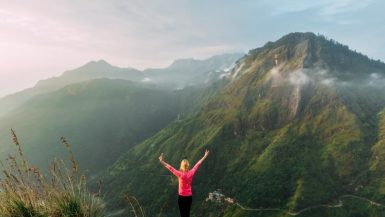
Sri Lanka Or Maldives: Which Tropical Land Should I Choose?
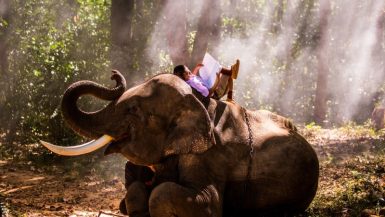
Thailand or Sri Lanka: Which Backpacker Haven to Visit?

IMAGES
VIDEO
COMMENTS
Getting From Thailand To Cambodia (From Bangkok By Train) Wake Up Early. Take The Train To Aranyaprathet. Take The Tuktuk To The Border Thailand-Cambodia. Thai Border Crossing. Cambodia Border Crossing. Take The Free Shuttle To The Bus Station. Take The Bus To Siem Reap. Final Thoughts On Thailand To Cambodia Border Crossing.
Rome2Rio makes travelling from Thailand to Cambodia easy. Rome2Rio is a door-to-door travel information and booking engine, helping you get to and from any location in the world. Find all the transport options for your trip from Thailand to Cambodia right here. Rome2Rio displays up to date schedules, route maps, journey times and estimated ...
The journey takes about 7-10 hours. The cost of a bus ticket from Thailand to Cambodia varies depending on the company and the time of year. You can expect to pay between $10 and $20 for a one-way ticket. There are several bus companies that offer direct buses from Thailand to Cambodia.
Thai citizens do not need a tourist visa when travelling to Cambodia in 2024. Thai passport holders can stay in Cambodia for a short period of time (for 14 days). Please, read all the information below to make your trip easy and safe. Don't rely on information from only one source. Please, with at least one more source listed in the link.
Go from Bangkok to Siem Reap by train and bus. Another way to travel from Thailand to Cambodia is overland. This is slower—just the train from Bangkok to the border town of Aranyaprathet takes half a day—but is also more scenic and of course, cheaper. After you arrive at the border, cross on foot to the Cambodian town of Poipet, where you ...
Yes, Cambodia's visa requirements apply to travelers entering the country by land. Foreign nationals need a valid passport and visa to enter Cambodia from Thailand (unless from a visa-exempt country). Eligible visitors can apply for a Cambodian visa online. The electronic application form can be completed from Thailand, or anywhere in the world.
Schedules are as from 3:30 AM to 5:30 PM, almost one bus every 1 to 3 hours. Travel time is about 5 hours. Crossing the Border. Go to the border at Rong Klue Market; you can take a taxi or a tuk-tuk. Pass through the Thailand Immigration Office. Cross the border and proceed to the Cambodia Immigration Office.
Cambodia's use of currency can be confusing Cambodia's official currency is the riel (4000r = US$1). The US dollar is used as a parallel currency and accepted everywhere, although small change may arrive in riel. Just to confuse matters, in towns bordering Thailand Thai baht (B) is also accepted. Get yourself a krama as soon as you arrive
Cambodia Airways, Sky Angkor and four other airlines fly from Bangkok to Phnom Penh every 2 hours. Alternatively, Virak Buntham operates a bus from Bangkok Mochit Bus Terminal to Phnom Penh 4 times a day. Tickets cost $23 - $40 and the journey takes 12h 30m. Travel Mart also services this route once daily. Airlines.
Thailand and Cambodia Itinerary: A Classic 12-Day Tour. A 12-day trip allows you to see the most popular attractions of both countries. Here's a favorite way to organize the itinerary: Day 1: Arrive in Bangkok. Days 2-3: Bangkok City Tour. Day 4: Fly to Siem Reap.
The eVisa for the Kingdom of Cambodia is an electronic travel authorization that allows eligible travelers from Thailand to request a tourist visa online.. The Cambodian eVisa for Thai citizens is the most popular type of visa for short-term stays.The online application is completely online—there's no need to go in person to an embassy or consulate and wait in long lines to apply for a visa.
Call us in Washington, D.C. at 1-888-407-4747 (toll-free in the United States and Canada) or 1-202-501-4444 (from all other countries) from 8:00 a.m. to 8:00 p.m., Eastern Standard Time, Monday through Friday (except U.S. federal holidays). See the State Department's travel website for the Worldwide Caution and Travel Advisories.
Going to Cambodia through Trat. One of the most taken routes to get to Cambodia from Thailand is the one that goes to Trat in the East of Thailand. In Trat city, you will easily find agencies to sell you trips up to Sihanoukville, Phnom Penh or other destinations in Cambodia. The trip will be in stages: first a minivan will taks you to the ...
Rome2Rio makes travelling from Southern Thailand to Cambodia easy. Rome2Rio is a door-to-door travel information and booking engine, helping you get to and from any location in the world. Find all the transport options for your trip from Southern Thailand to Cambodia right here. Rome2Rio displays up to date schedules, route maps, journey times ...
There is only 3rd class here, but that price for a 5 hour journey you cannot argue. Note when buying train tickets from Bangkok to Poipet you can only buy them on the day of departure and departures are at around 5.55 am, 11.15 am and 13.05. Technically the train takes 5 hours and 30 minutes, but this is very much subject to change.
Going from Thailand to Cambodia was like going from the United States into Tijuana Mexico, from nice to dingy. Cambodia has a lot of trash thrown everywhere and plastic bags along the highways. The roads weren't as nice as Thailand, but still not as bad as Laos. We settled on a 20 dollar room in Koh Kong on the waterfront that was nice.
It's going to take you just 90 minutes to travel from Cambodia to Thailand but you should be at the airport 3 hours before your flight. As such, we recommend that you bring some snacks, water, and a neck pillow especially if you're travelling early in the morning or late at night. Also, we suggest that you travel light as excess carry-on ...
Step 2: Pay the eVisa fee with a debit or credit card. Step 3: Receive the approved Thailand visa. It takes just a few minutes to complete the application and most requests are processed and approved in 1 to 3 days. The holder must travel from Cambodia to Thailand within 30 days of receiving the permit.
Cambodia is one of the most heavily mined countries in the world. Landmines pose a threat to the safety of travellers. There are still reports of landmines in the following areas: the Preah Vihear Phnom Kulen temple areas; the border areas, including with Thailand; the River of a Thousand Lingas
The cheapest flight deals from Thailand to Cambodia. Phnom Penh. £82 per passenger.Departing Sun, 1 Sep, returning Mon, 30 Sep.Return flight with Thai AirAsia and Thai VietJet Air.Outbound direct flight with Thai AirAsia departs from Don Mueang on Sun, 1 Sep, arriving in Phnom Penh.Inbound direct flight with Thai VietJet Air departs from Phnom ...
Rome2Rio makes travelling from Cambodia to Thailand easy. Rome2Rio is a door-to-door travel information and booking engine, helping you get to and from any location in the world. Find all the transport options for your trip from Cambodia to Thailand right here. Rome2Rio displays up to date schedules, route maps, journey times and estimated ...
1. Apply for Your Visa. If you are entitled to a visa exemption (including Cambodians entering Thailand for less than 14 days) or visa on arrival, you can skip this step and go to step 2. More information about visa exemption/visa on arrival here (click). If you need a visa, you must apply for an appropriate visa at the Royal Thai Embassy.
Thailand is bigger, richer, and more developed. It is home to many of the world's best beaches and there is a lot more going on when it comes to nightlife. Cambodia, on the other hand, is smaller and more rural, which means lower prices and fewer crowds. It is also home to the incredible temple complex of Angkor Wat.